Whales are a diverse group of marine mammals that have roamed the ocean for thousands of years. But even though they’re water-based creatures, they are warm blooded animals who nurse their young and breathe air just like humans do.
And although their massive bodies could certainly cripple a sea-faring vessel that crosses their path, whales are slow and peaceful. But one day, marine biologist Nan Hauser feared for her life when a whale took an interest in her and wouldn’t leave her alone. Then she realized that an even bigger threat was lurking in the water and was targeting her.
Nan Hauser Dedicated Her Life to Whales

Nan Hauser is president and director of The Center for Cetacean Research and Conservation (CCRC), an organization that dedicates itself to studying whale species. She founded the CCRC almost three decades ago and its affiliated project, Cook Islands Whale Research Project, focuses on humpback whales among other creatures that travel through the equatorial South Pacific. But what type of research do they do?
CCRC’s Whale Research is Extensive
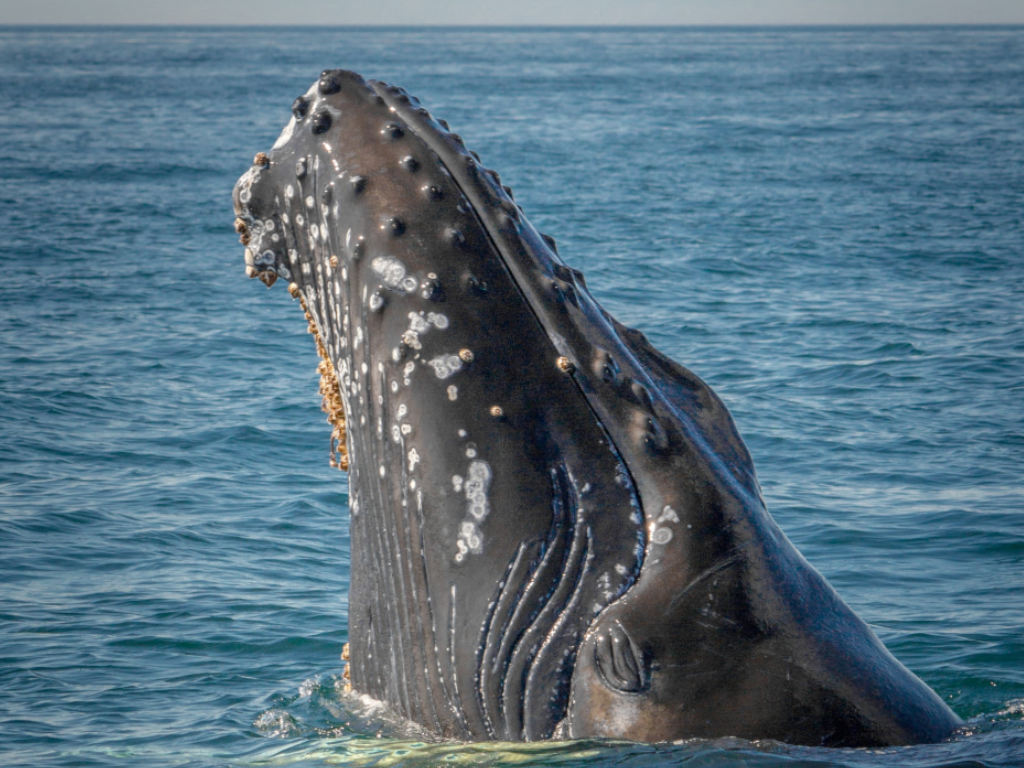
The CCRC’s research project includes a wide array of topics such as identifying the population of each species, studying genetics, analyzing migration and navigation, and observing surface and underwater behavior of these majestic creatures. And they’re fully equipped to conduct their research using satellite tagging, acoustics, photo ID’ing and infrared technology. But a part of Hauser believes that she has been prepared for this line of work all her life.
She Dreamt of Whales as a Kid
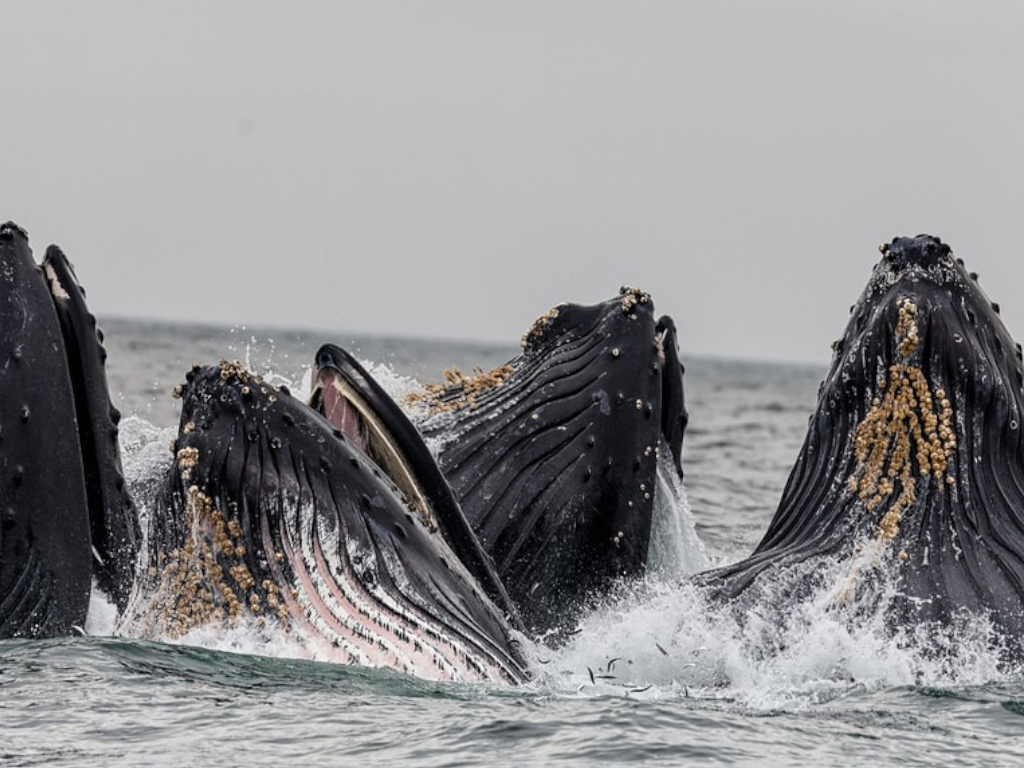
As a kid, Hauser and her family spent a lot of time in Bermuda. She even recalls looking out into the Atlantic Ocean and dreaming about whales. “That is when I think my passion for the ocean and studying whales really began,” she was quoted on her site WhaleResearch.org. But as she got older, she did more research on whales and discovered that there was a huge reason why these sea creatures are so important to the planet.
Whale Poo is the Ocean’s Salvation
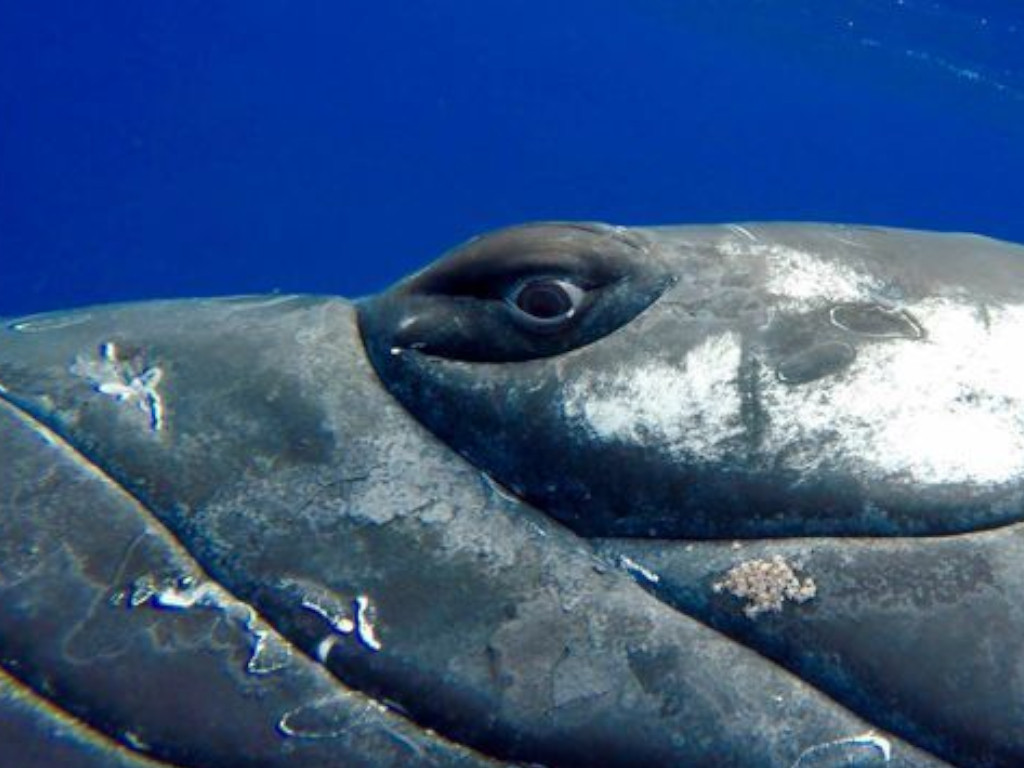
Farmers and gardeners know how beneficial manure is for promoting a healthy crop because it provides nitrogen, phosphorus, potassium and micronutrients that help plants grow. That’s pretty impressive considering that manure is just a fancy word for cow poo. And it turns out that when whales poop, their excrement infuses the ocean’s surface with nutrients that help the ocean’s ecosystem. This is why Hauser considers herself and her team proud whale guardians. But nothing in her experience could have prepared her for what happened during a dive.
She Traveled the World for Whales
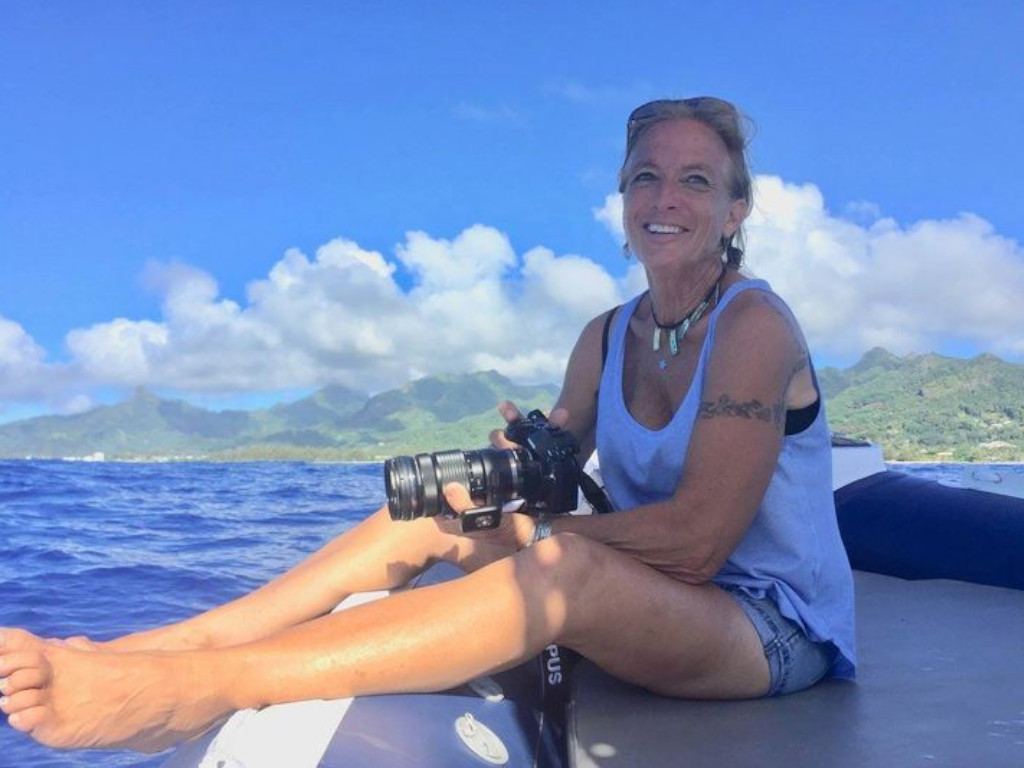
The 60+ marine biologist was born in Maine, but has traveled across the planet for decades to expand her knowledge of whales. And one of the great things about her line of work is that she gets to swim alongside whales, snap some amazing photos of these creatures, and have a good time in the process. But for all the hard work she’s put in to fight for whale rights, she never imagined that she would be the one in need of protection.
Her Colleagues Were Tracking Her
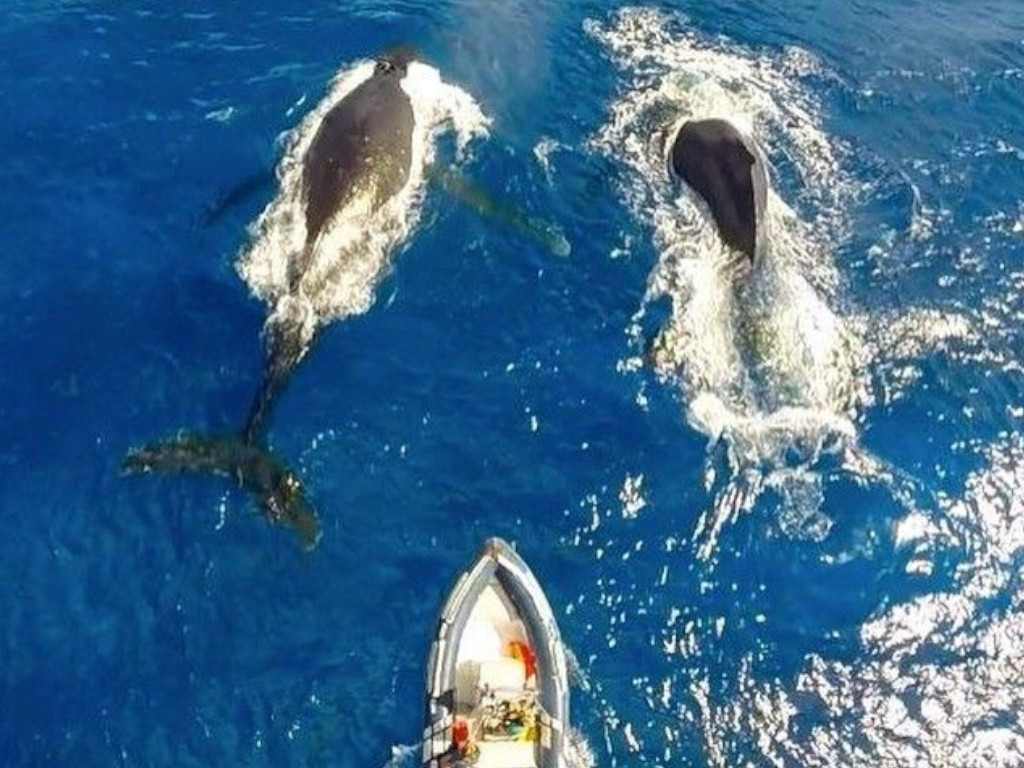
It all started one summer while she was swimming off the shores of Rarotonga, the largest island in the southern group of the Cook Islands in the South Pacific Ocean, about 2,100 miles northeast of New Zealand. But she wasn’t alone. She was joined by a research vessel full of colleagues who were tracking her in the water using a drone. They also kept a close watch using their human eyes, as well. And yet they couldn’t see the danger she was in.
A Male Humpback Whale Spotted Her
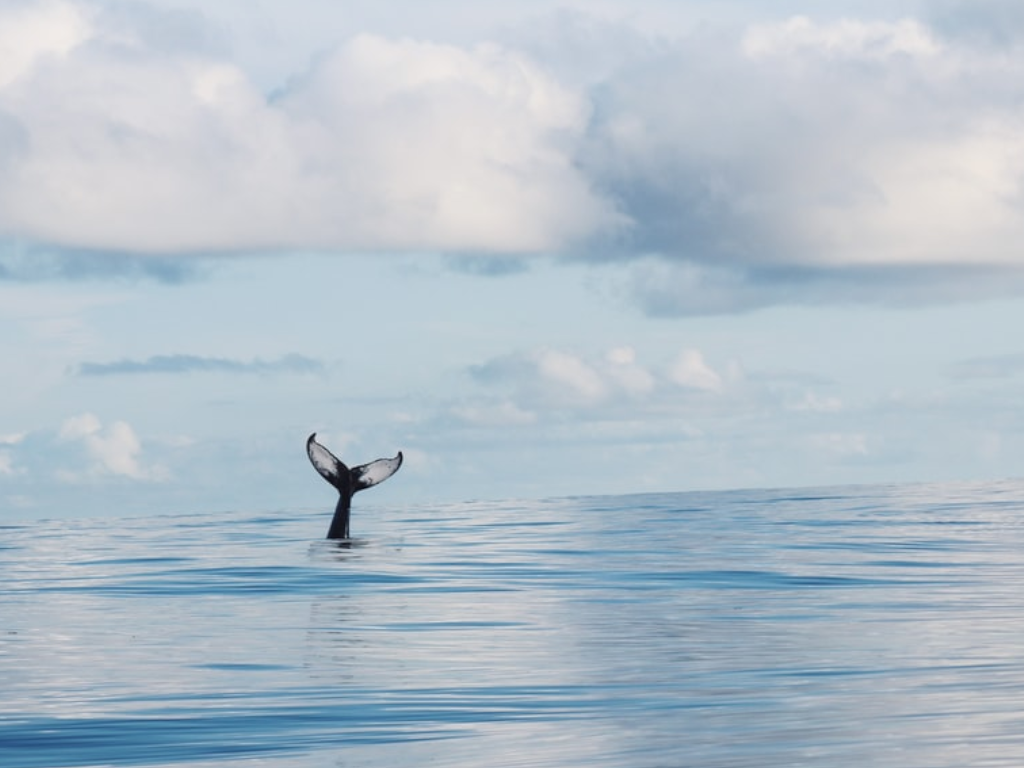
Hauser was using her waterproof camera to snap photos of a pod of humpback whales. A pod is a social group of whales that travel in large and stable groups when caring for their young, migrating or hunting together. But she had documented whales many times before and wasn’t worried at first. Then, a large, male humpback whale weighing over 23 tons and measuring over 50 feet in length altered course and headed straight towards her.
His Behavior Wasn’t Normal
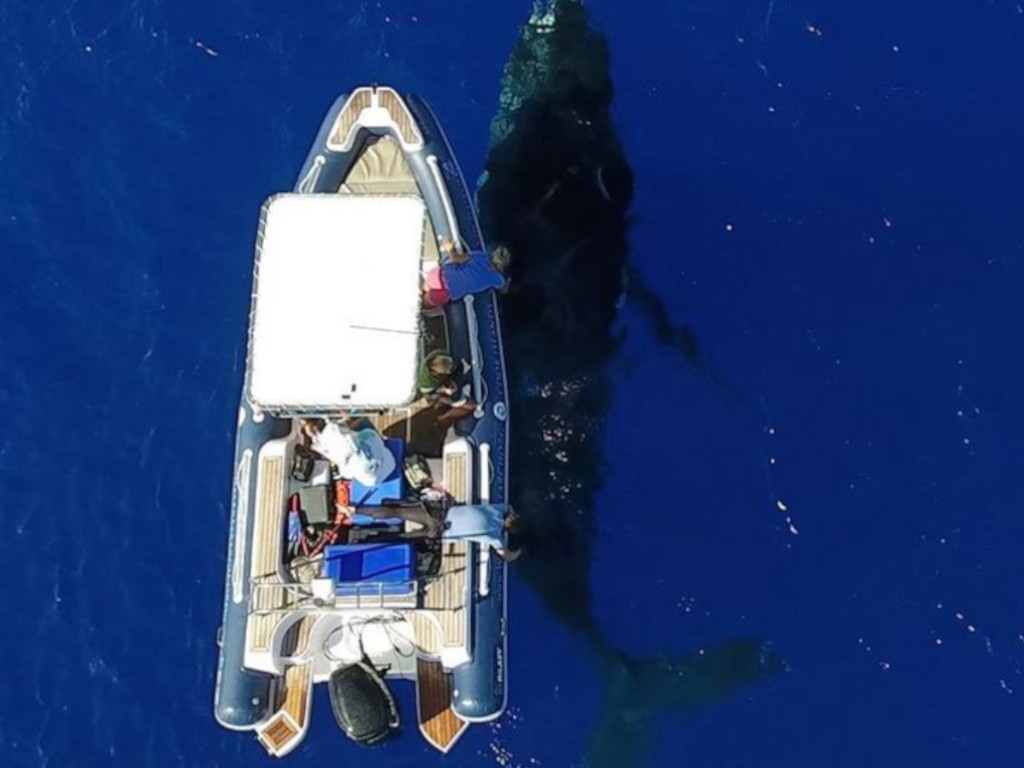
Hauser was used to being the observer who approached the whales with her camera. She certainly wasn’t used to having one of them turn to observe her. Then she realized that it wasn’t doing that at all. It was swimming towards her fast, almost like it was intentionally trying to collide with her. Since his behavior was odd, she kept snapping photos of the approaching whale. But not once did she feel like her life was in danger and yet it was.
Whales Usually Ignore Humans
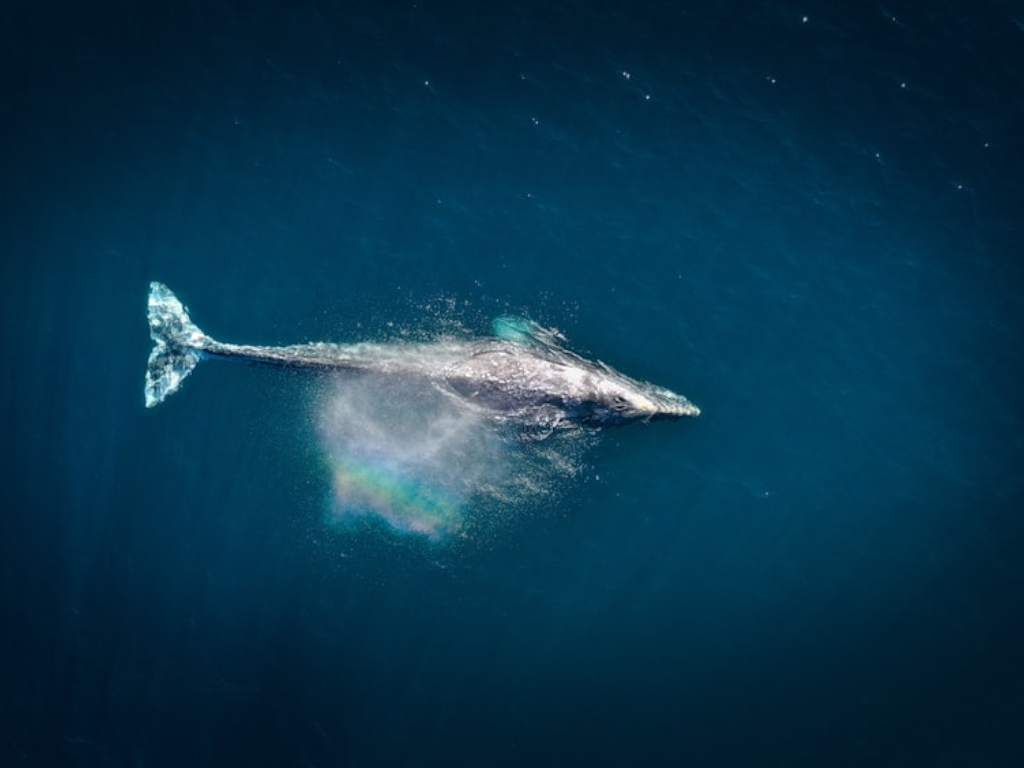
As the whale got closer, Hauser’s confusion grew. In her many years of observing these creatures, she had never known whales to show much interest in humans. In fact, they often ignored humans unless they deemed them to be a threat. But she knew she hadn’t done anything to warrant being a target. And yet, this whale was cutting through the water like a hot knife on butter to get to her. Then he did something that scared her to death.
He Didn’t Stop
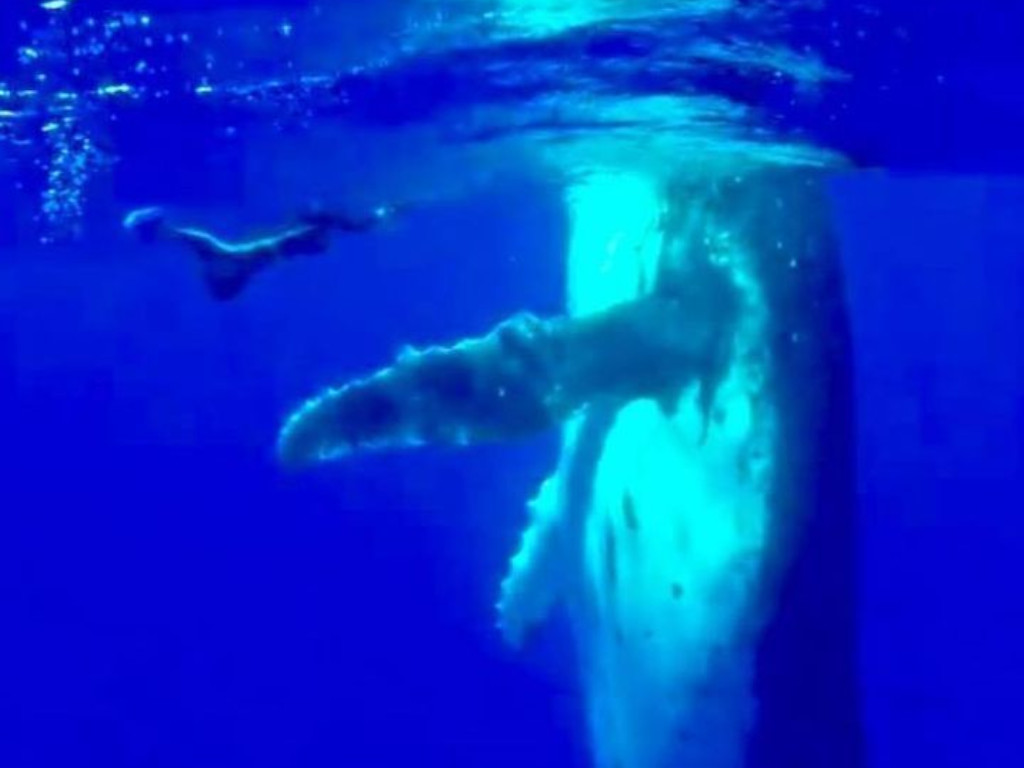
He rammed into Hauser, which left her completely stunned. At first, she assumed he was in a rush, and she was in the way. But the whale wouldn’t leave her alone. He kept ramming his head into her and pushing her farther away from the boat full of her colleagues. Still, she struggled to swim away, but to no avail. At this point, she felt powerless and wasn’t sure how to get out of this jam.
He Didn’t Know His Own Strength
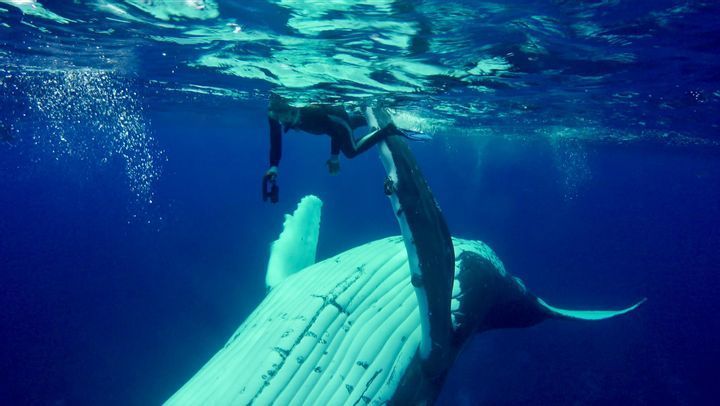
The whale’s behavior was unprecedented. Hauser had never seen a whale behave so aggressively towards a human before. But at this point, she didn’t care. She was being repeatedly battered by this enormous beast. And even if he wasn’t trying to hurt her, he obviously didn’t know his own strength. But if he kept this up, he was going to leave her critically injured or worse.
She Feared for Her Life
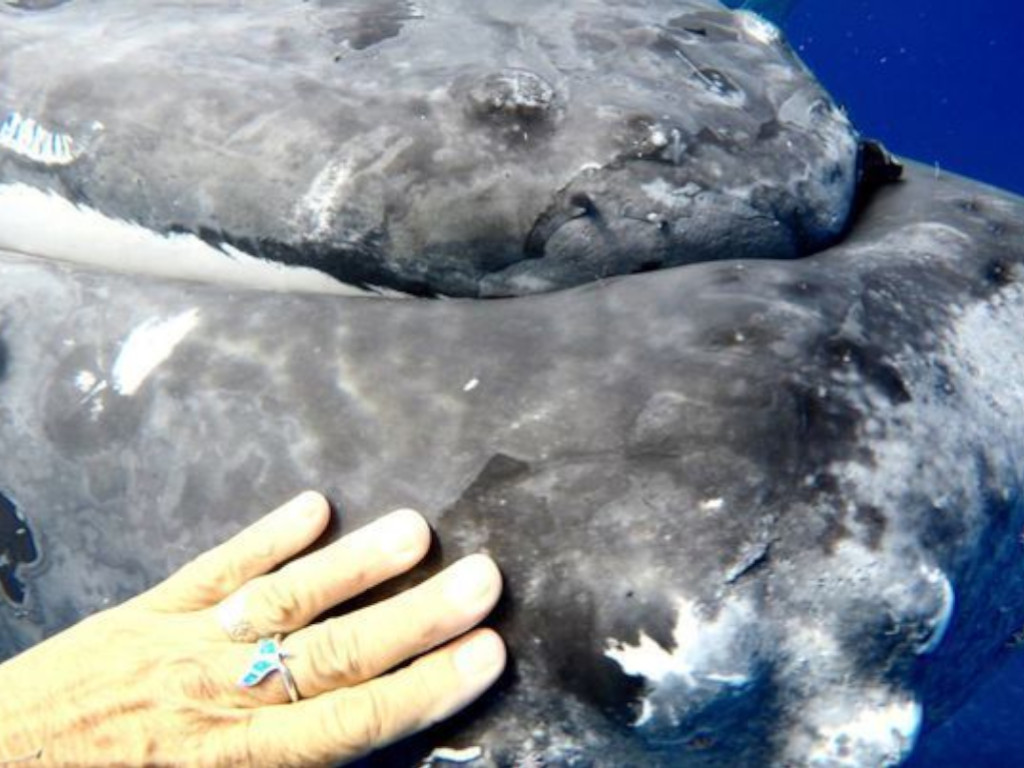
So far, the only part of the body the whale had used to push her was his head, but he could have easily pushed her near his flippers or tail. This was dangerous because with one swing of either appendage, the whale could knock her out, send her hurling into the ocean floor, or kill her. At this point, she knew that she was either going to lose her life from blunt trauma or drowning, but all hope was not lost.
She Swam Close To His Head
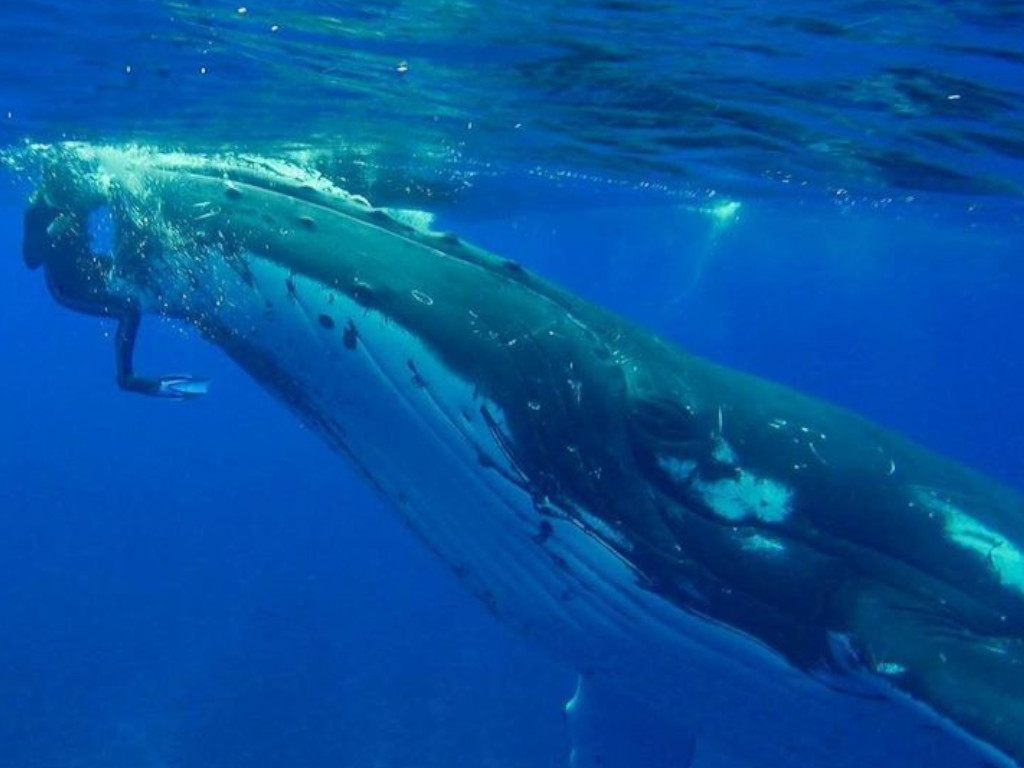
Although the whale was ramming her with his head, Hauser realized that this was probably the safest place to be. And she wasn’t worried about ending up in his stomach because whales have sheets of soft baleen in their mouths instead of teeth. But she felt like a tennis ball and the whale was the racket. She had to figure out how to get away from the massive mammal immediately.
She Had to Stay Cool
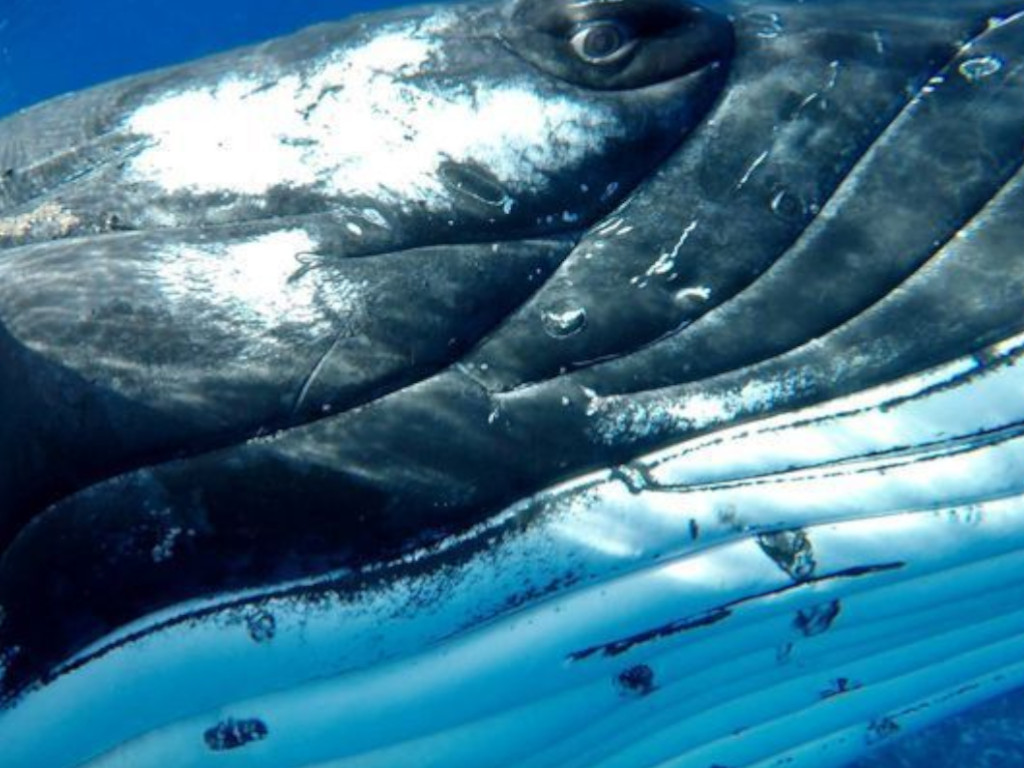
Her research had taught her that whales tend to react when other creatures sense a change in their behavior. So, she tried to keep a cool head even though her life was in mortal danger. She figured that if she tried to act any differently, he would perceive her as a threat and change his behavior accordingly. And that was too big of a risk to take out in the ocean without the help of her colleagues.
She Was Terrified
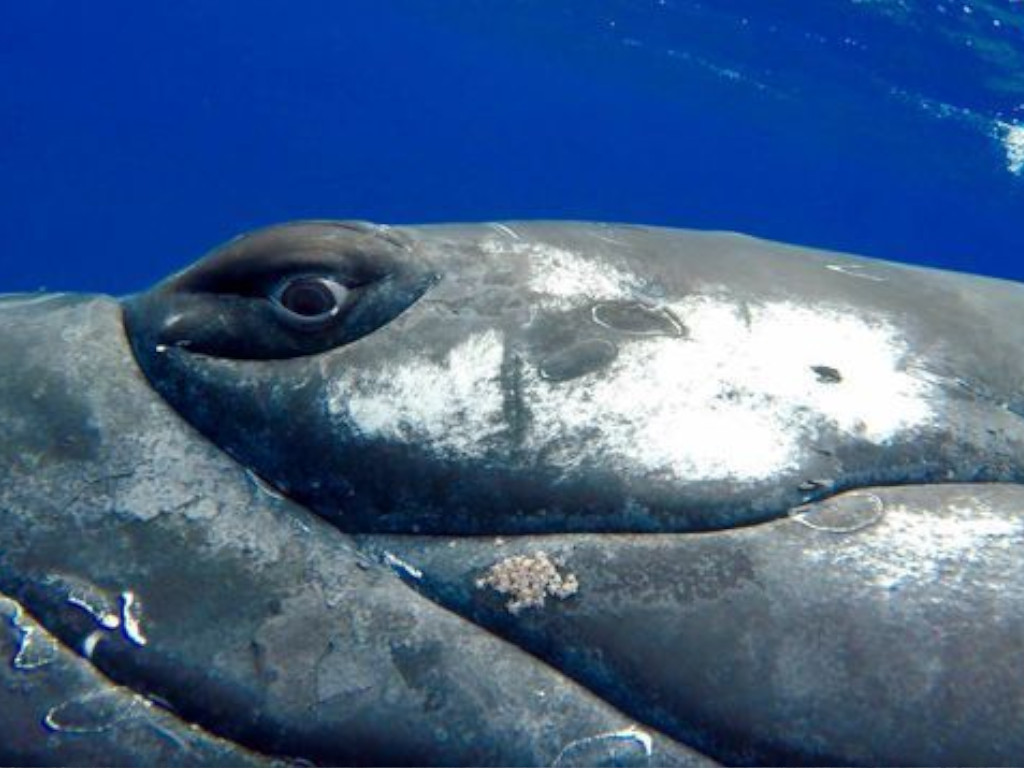
Hauser’s friends, family and co-workers all knew that she was not a fan of spiders. In fact, she was terrified of them, which they all found ironic because spiders are so small. It would make more sense that she would be afraid of a big creature like a whale. But she was more likely to scream like a banshee at the first sight of an eight-legged spider than a whale. But on this day, she was screaming on the inside.
Her Colleagues Were Equally Confused
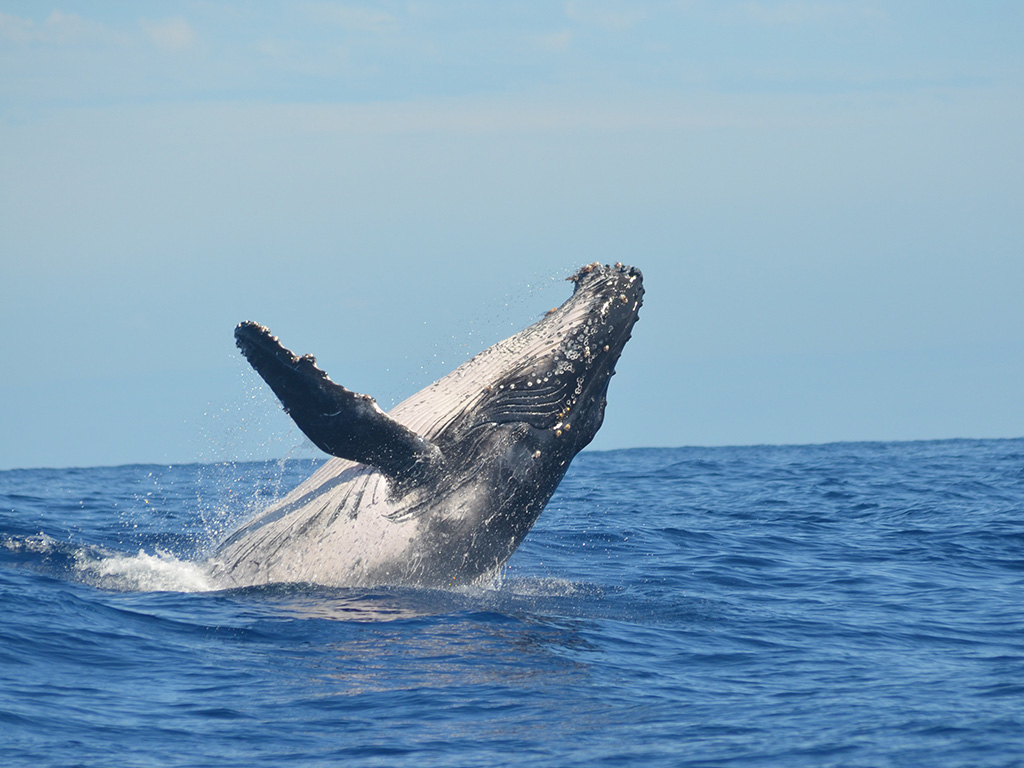
While Hauser was underwater trying to figure out how to stay alive, her colleagues were well aware that the whale was attacking the marine biologist. But they were aboard a small vessel and no human had the strength to stand up to a whale without a weapon. But hurting this creature was the last thing any of them wanted to do, especially when they suddenly realized why the whale was behaving the way it was.
A Marine Biologist to the End
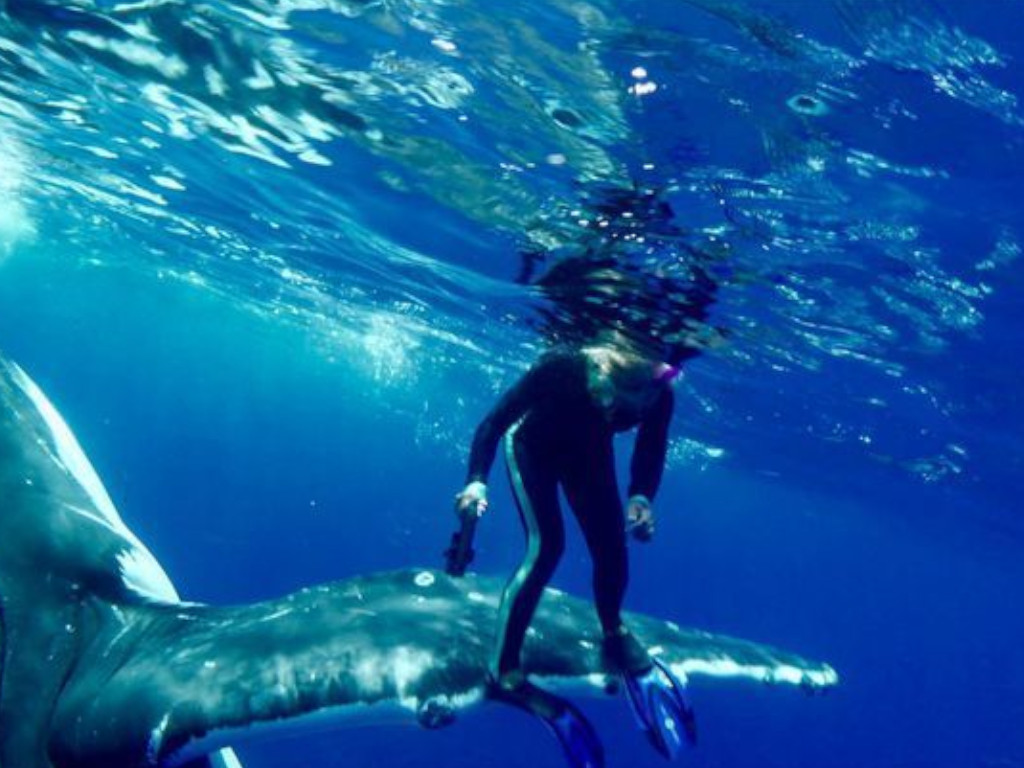
Most people in Hauser’s situation would have dropped their camera and allowed it float to the bottom of the ocean. This would have been a smart choice since they would need their hands free to swim away. But Hauser continued to take photographs of the whale. Then, she came to a chilling realization that she was quite possibly documenting her final moments on Earth.
She Couldn’t Communicate With Her Colleagues
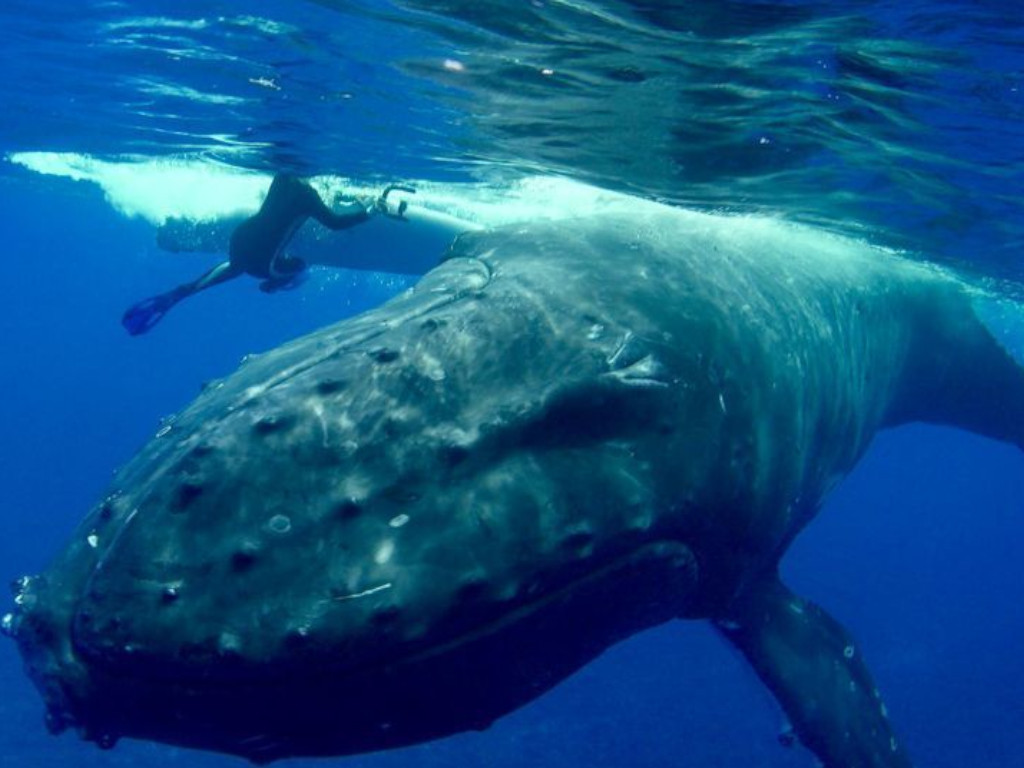
The crew aboard the research vessel knew something was wrong because they had been monitoring Hauser’s progress with their drone. But they were powerless to stop the whale or what was to come and they weren’t the only ones. Hauser’s diving buddy wasn’t aware that she was in danger because she couldn’t risk changing her behavior and alarming the whale. And soon, she ran the risk of ending up all alone.
A Distance Was Forming With Her Colleagues
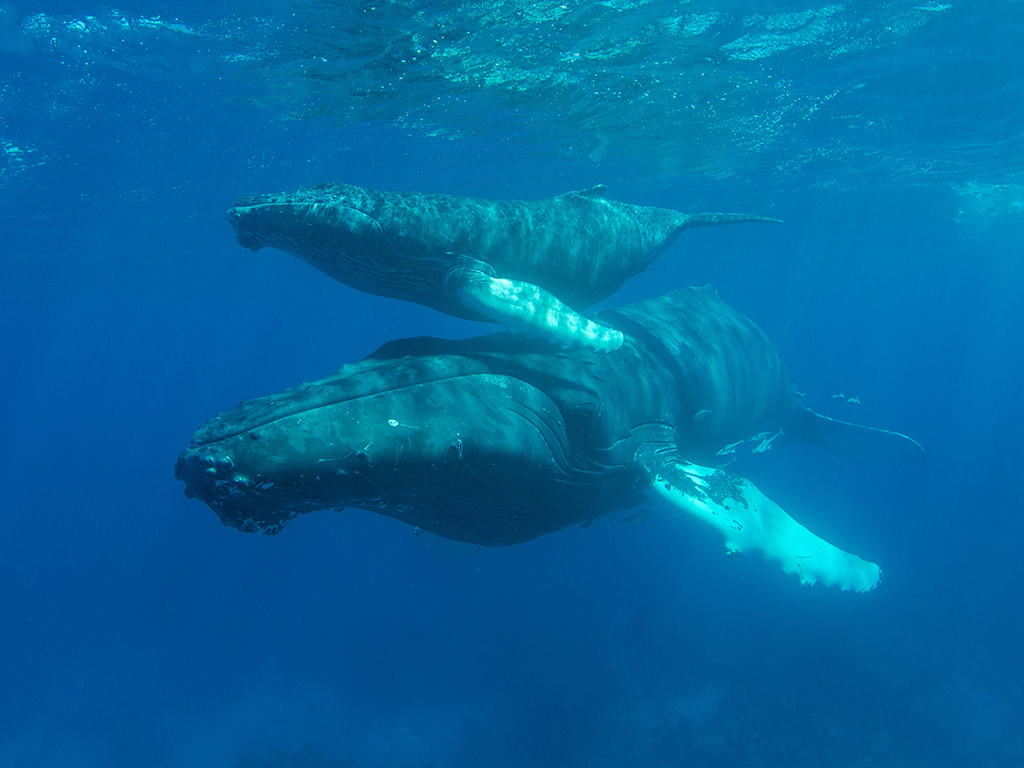
As the whale continued to shove her away, Hauser realized he was separating her from her ship. Soon enough, she would find herself deeper in the ocean. She had to act fast, but she wasn’t sure what else she could do to help herself. And then she noticed something in the water that made her realize that she and her whale date were about to have the unexpected company of another large beast.
Another Animal Approached Them
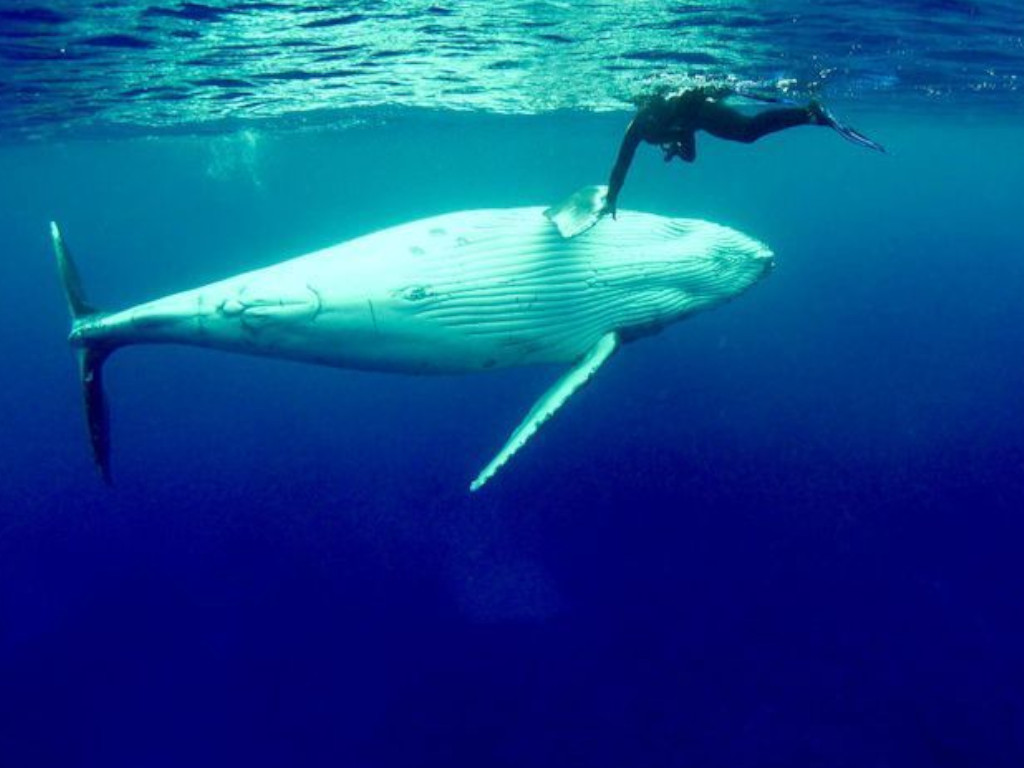
Another animal approached Hauser and the whale. It was a blurry figure at first, but then she noticed that it was another humpback whale. This didn’t surprise her since these creatures were highly sociable and probably swam over to hang with his friend. But while this whale was keeping its distance, it was acting as erratic as the whale that was pummeling her with his head. What was happening?
The Second Whale Was Highly Agitated
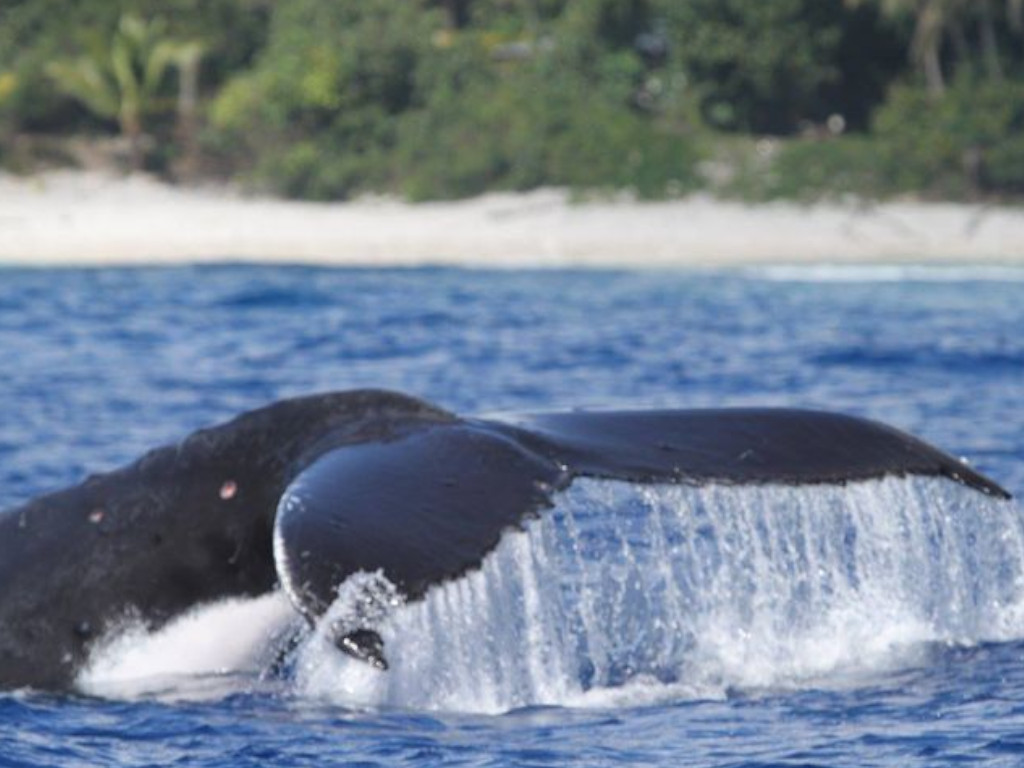
The second whale’s behavior was unusual, too. It kept using its tail to slap the surface of the water. And to make things more interesting, it would seemingly lash out at something behind it as if it were angry or afraid of something. This made Hauser even more curious about both animals’ behavior. It was like they were trying to tell her something, but she wasn’t sure what it was.
She Couldn’t Take Much More of This
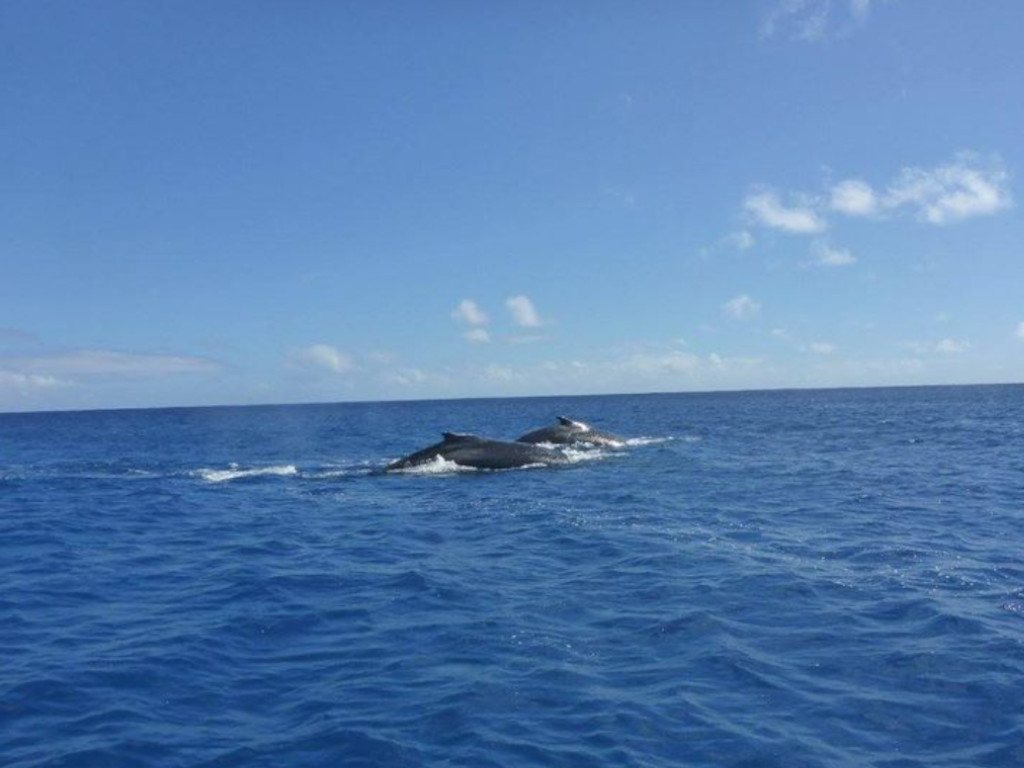
As if worrying about one whale wasn’t bad enough, now she had two in her vicinity. And as the male whale kept scraping her with the rough barnacles on his skin, she feared that the other whale would see it as a game and start doing the same to her. Her body was already hurting. She certainly couldn’t keep this up much longer. Then, something in their behavior changed, but it didn’t bring her the relief she was looking for.
She Realized What Was Happening
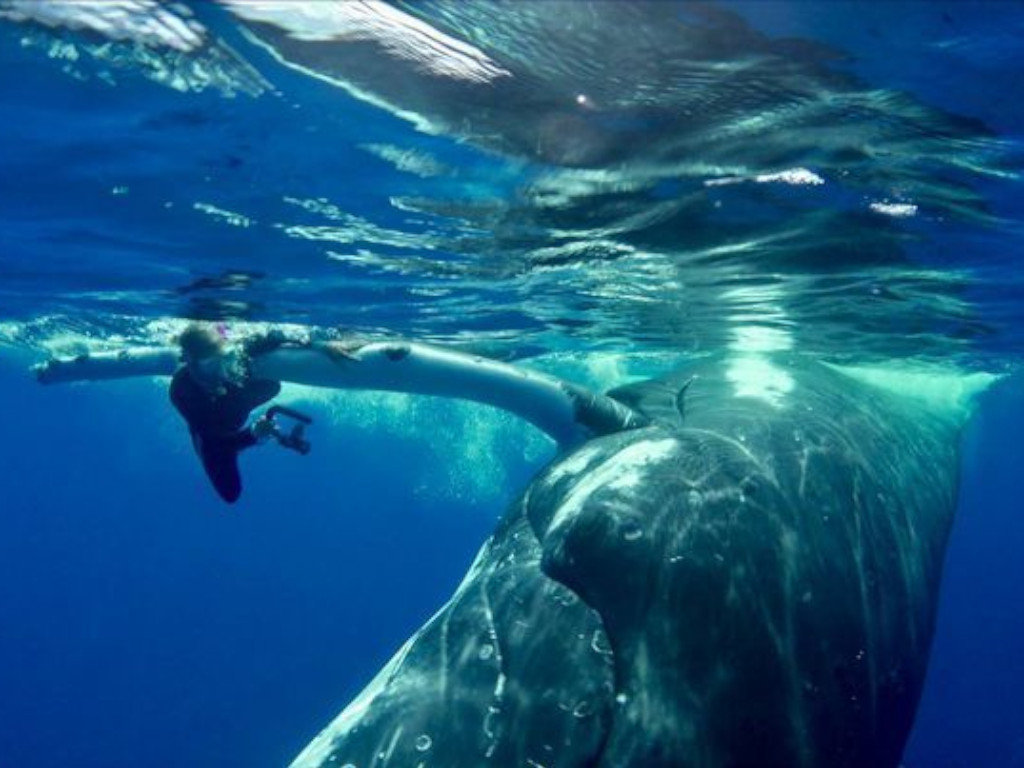
Finally, Hauser’s years of experience studying whales had paid off, and she realized why the second humpback whale was behaving the way it was and why the first whale had been swimming so close to her for the last twenty minutes. It turns out that her life really was in jeopardy, but it wasn’t from the whales. It was from something truly sinister and unlike the humpback whale, this creature had teeth.
A Brutal Predator Was Stalking Her
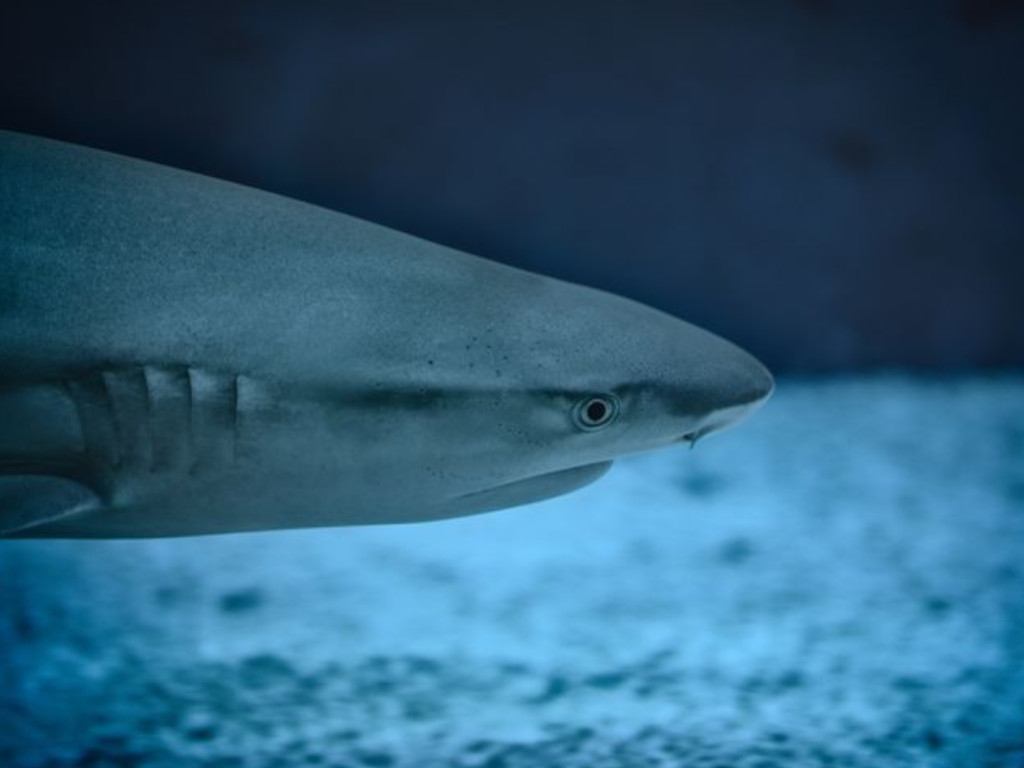
As she took a closer look, she saw that very near the second whale was a tiger shark, a dangerous predator who had a strong appetite for humans. To make matters worse, this shark was larger than others at 15 feet in length. That’s when Hauser knew that the whales were not actually trying to hurt her. They had been trying to protect her from the menacing shark.
They’re Deadlier Than Great Whites
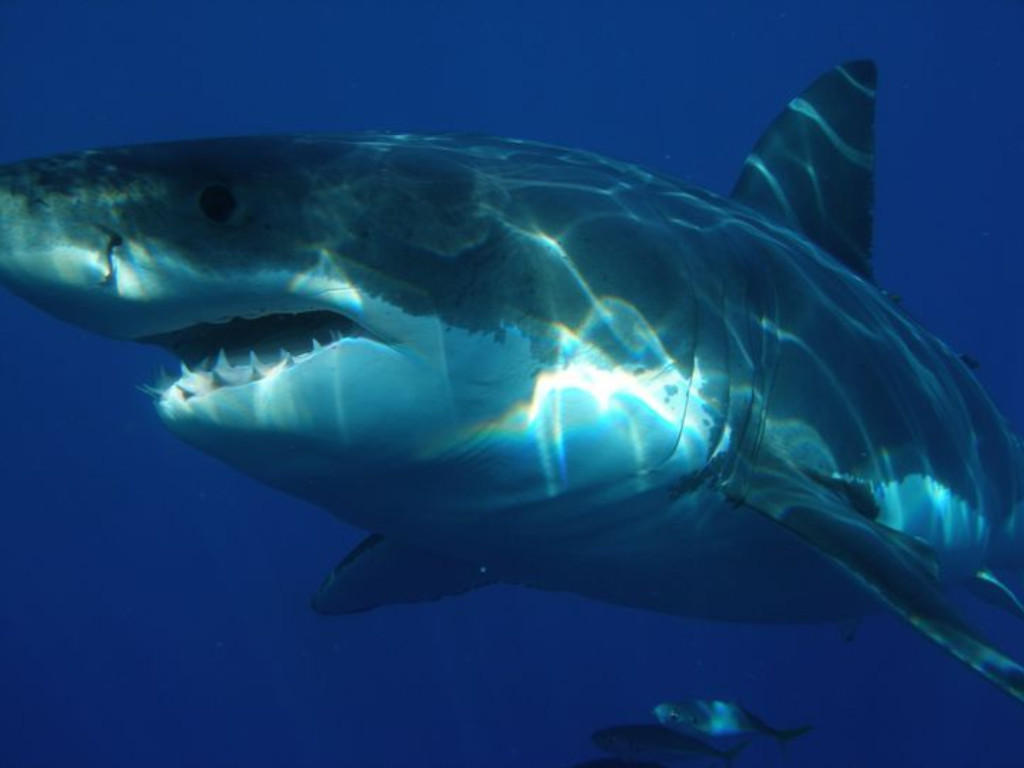
Great white sharks often get a bad rap for being the most dangerous sharks in the sea thanks to Hollywood movies like “Jaws” that turn them into antagonists. But great whites often take one huge bite from their prey and then leave. Tiger sharks, however, will continue to prey on their victim until they’re in their stomach. And unfortunately for Hauser and her diving buddy, both were in close proximity to an unusually large and hungry tiger shark.
She Tried Dashing Towards the Boat
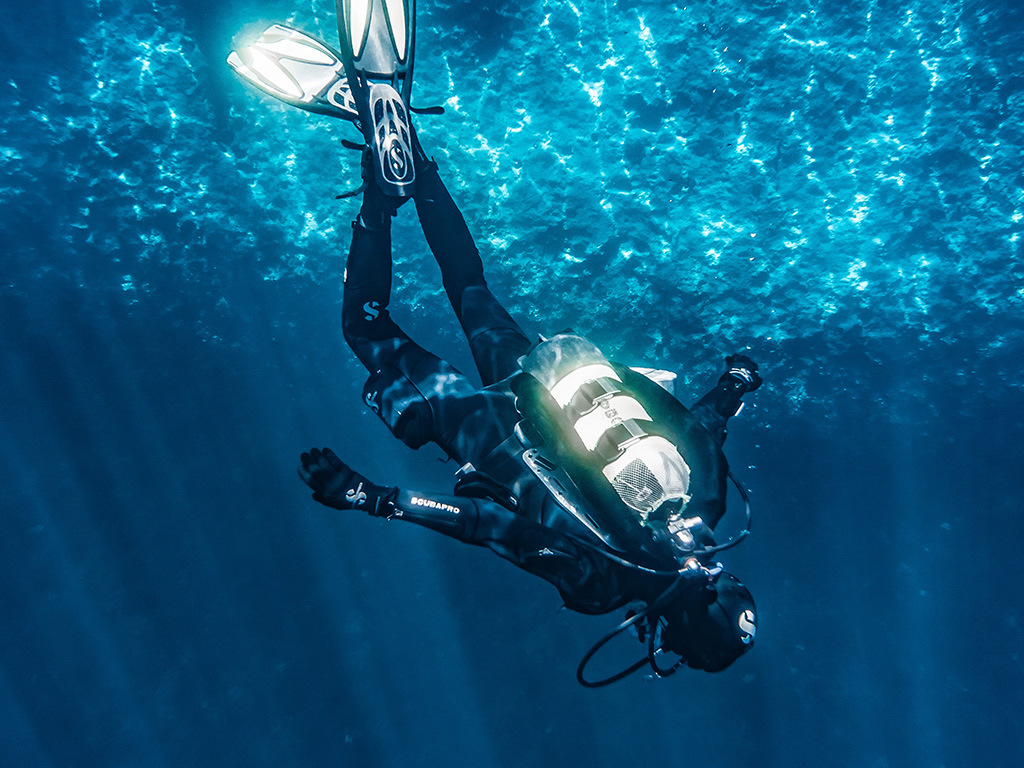
Hauser was both relieved and horrified. The relief came from knowing that her research on whales and her noble effort to save them were not in vain because they were obviously trying to save her life. But this brought her little comfort because she knew that the tiger shark would destroy her if it got too close. So she did her very best to swim past the male whale and head to the boat before it was too late.
It Was the Race for Her Life
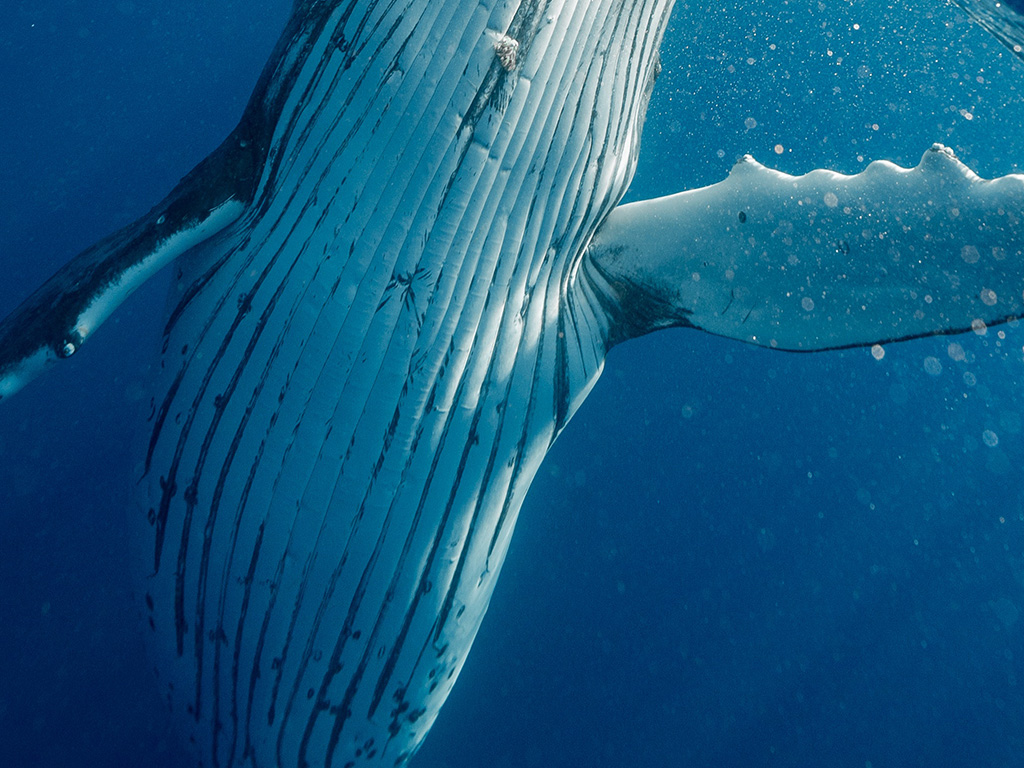
Hauser and her diving buddy, who was also her cameraman, pushed themselves beyond their limit to get away. But they were well aware that humans were not nearly as great at swimming as tiger sharks, and they feared that the creature would catch up to them and start attacking one or both of them. So they flailed their arms and kicked their legs as hard as they could. Every once in a while they would turn back to make sure the shark wasn’t on top of them.
She Made It to Safety
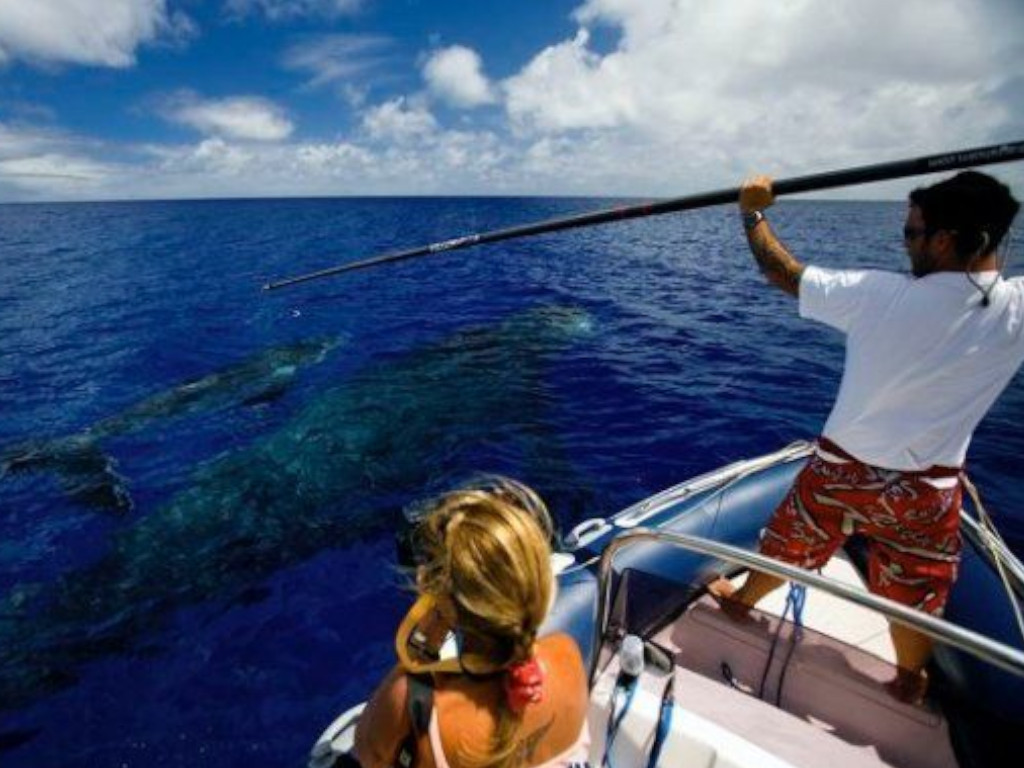
It was touch and go there for a minute, but Hauser and her diving buddy were able to reach their boat, but she struggled for words at first. The swim and the anxiety had left her breathless for all the wrong reasons, and she struggled to get it back so she could warn her crew about the tiger shark. And as she finally calmed down, her fear was replaced with exhilaration over what had just happened and the way that whales had tried to save her.
He Checked Up On Her
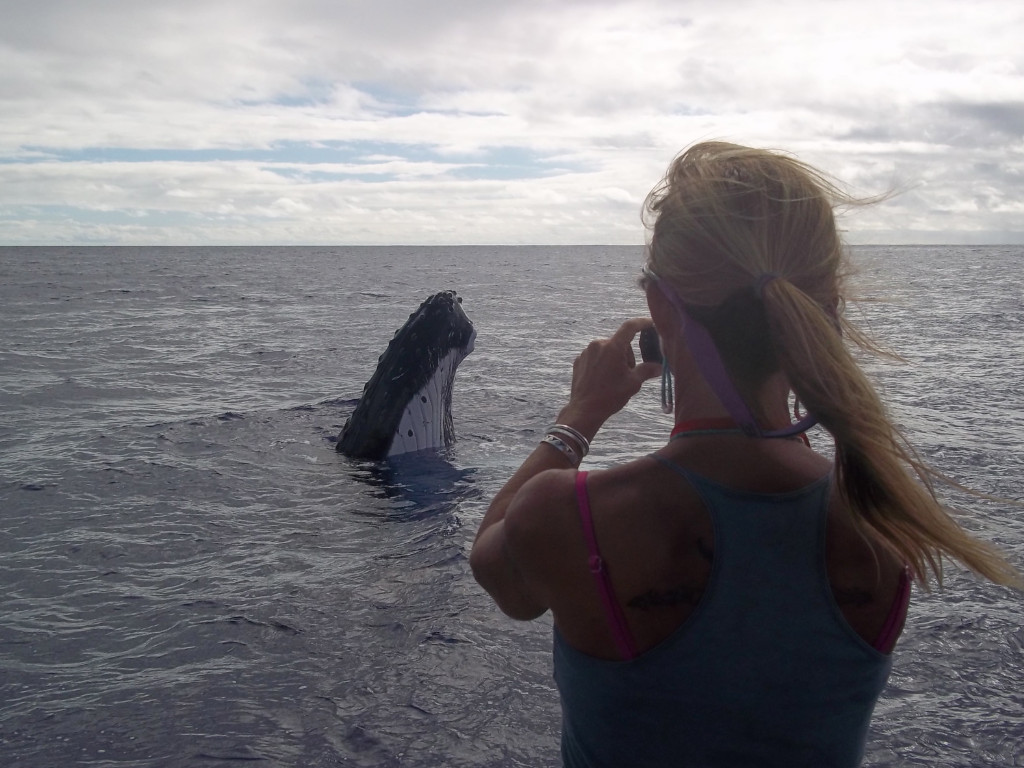
Usually when a friend is hurt and in the hospital, his or her friends will pay a visit to check on them. Well, when Hauser peered over the the railing, she saw the male humpback whale she had met in the water swimming next to the boat. It was as if he wanted to make sure that she was okay before swimming back towards his pod. Once it realized she was okay, it released a burst of water from its blowhole and dove under the water.
She Bid Her Hero Farewell
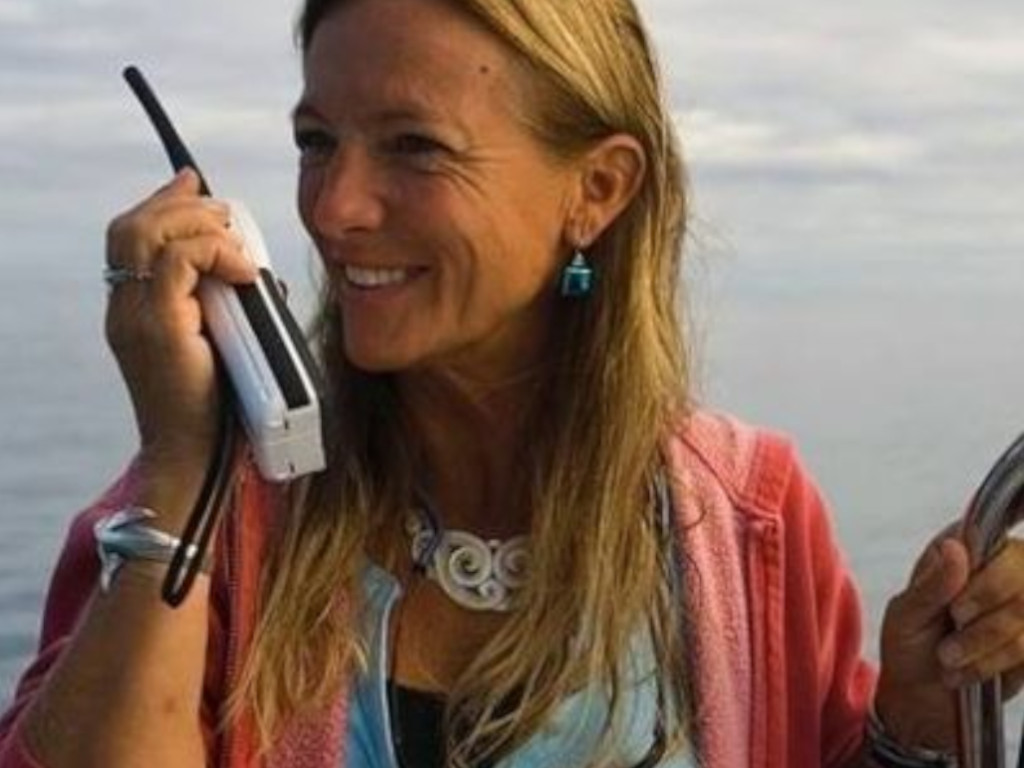
Hauser sat down on the stern of the boat and watched as the male humpback whale swam away. She couldn’t help but smile at how kind the creature had been and how he had gone out of his way to save her. But she figured that no one would believe what had happened to her. Fortunately, she had plenty of proof that would appease even the biggest skeptic in the marine biology community.
She Reviewed the Footage
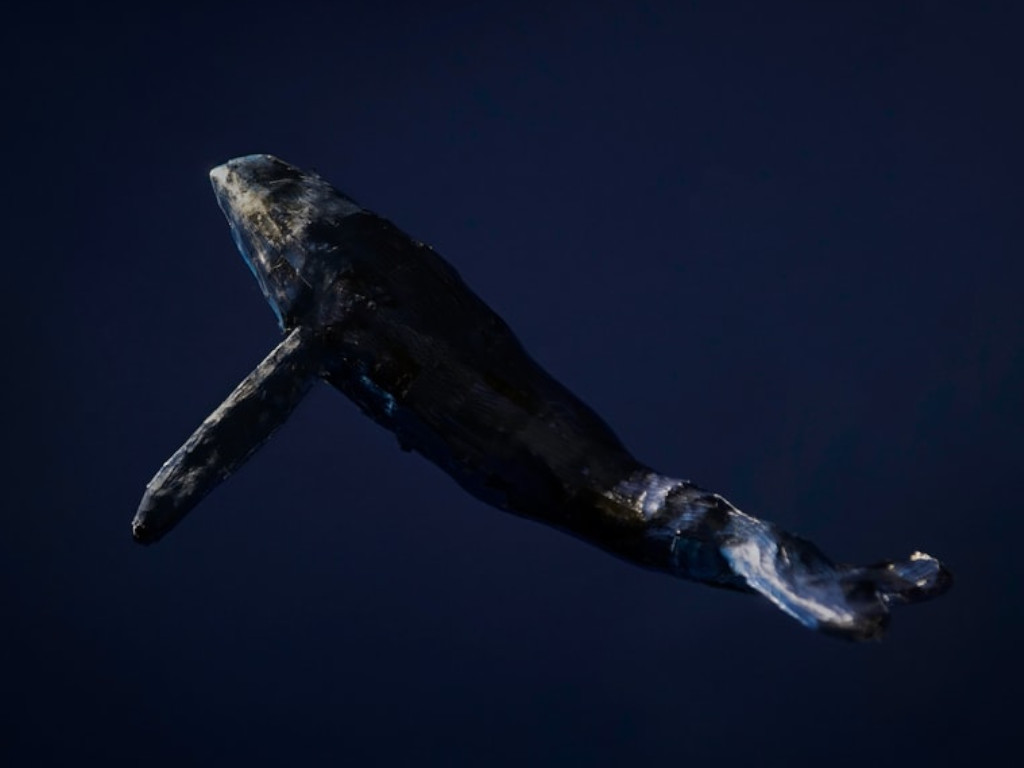
Hauser took a look at the footage from her underwater camera as well as the camera from her diving buddy. She also reviewed the footage taken by her colleagues from the deck of the boat as well as the footage from the drone. Then she became convinced that the humpback whale’s erratic behavior of keeping her close to him had been a valiant effort to protect her from the menacing tiger shark.
Humpback Whales are Quite Heroic
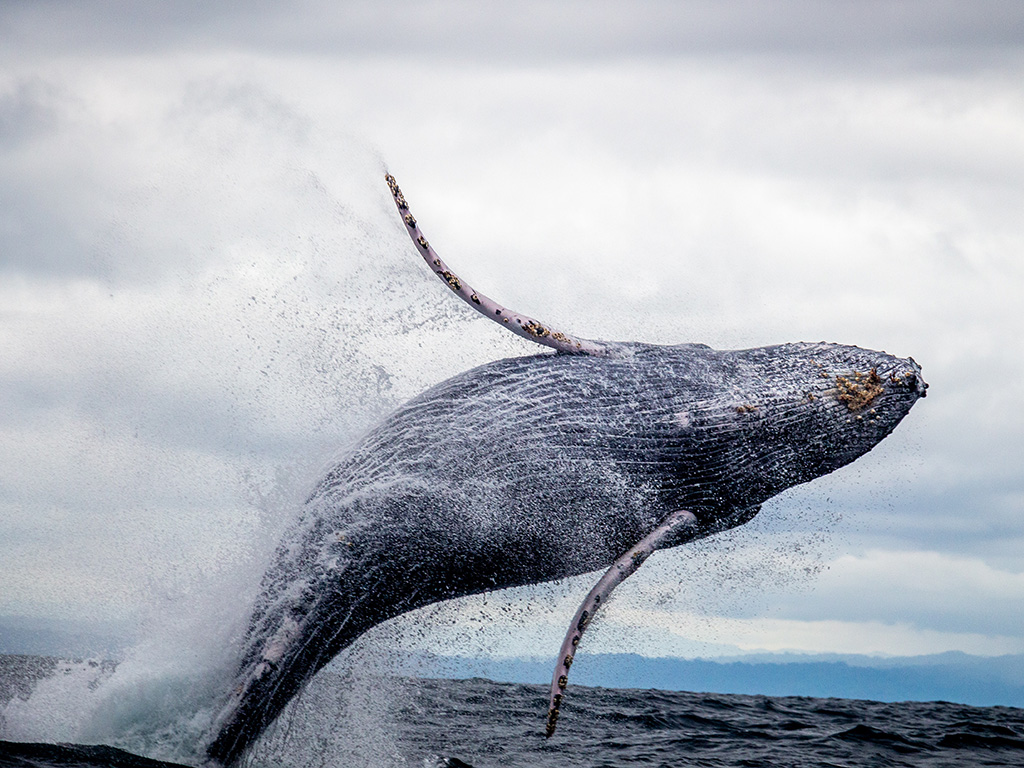
In 2016, a study on humpback whales had compiled over 115 cases documented over the last 6 decades, and it showed that these creatures are quite heroic. Not only have they reportedly rescued their own offsprings from predators, but they also saved other species like seals and dolphins as well. But this was the first time she had ever heard of a whale attempting to save a human.
She Was the First Human Case
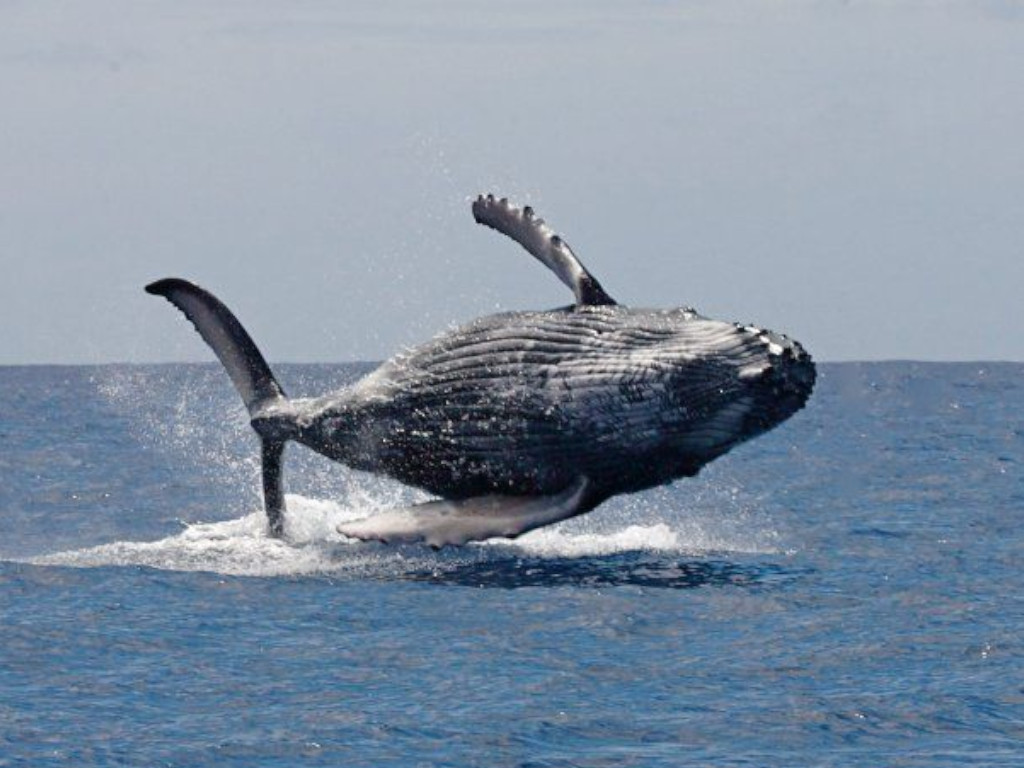
Hauser’s rescue was the first reported case regarding a human, but marine ecologist Robert Pitman claims he once saw a humpback whale fling a seal out of the water to keep a pod of killer whales from turning it into their meal. But because humpbacks had never rescued a human being before, Hauser had a tough time convincing her scientific colleagues of her theory that she had been rescued by the whale.
The Scientific Community Was Skeptical
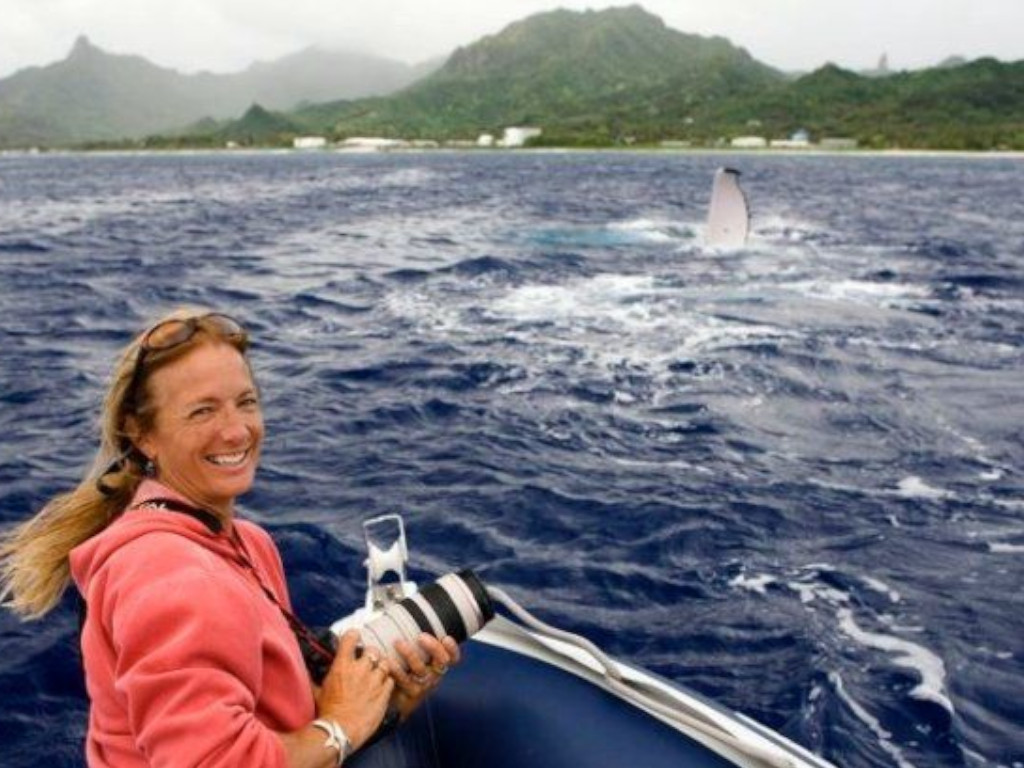
There were some in the scientific community who believed that Hauser’s theory about the whale’s behavior was accurate. But there were other scientists who weren’t convinced of the whale’s true motives but believed that it might have been acting the way it did for reasons other than the selfless ones Hauser believed in. So, the tiger shark’s presence in the water might have simply been a coincidence. But was the shark ever there to begin with?
The Mystery of the Tiger Shark
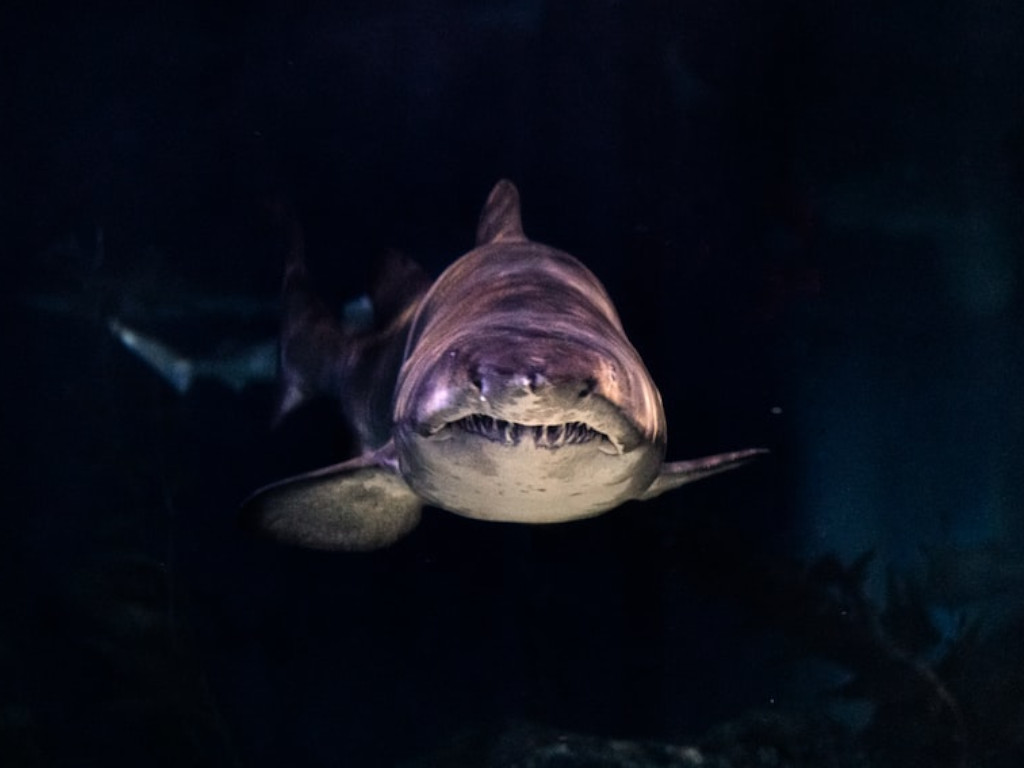
The compiled footage does show that Hauser had been dragged away by the humpback whale, but a lot of the viewers on social media were confused by the fact that the shark was nowhere in sight. Her colleagues, however, did come to her defense and stated that they had turned the underwater video drone off because they were worried that it would attract the shark to Hauser. And that’s why there was no footage of the shark in pursuit. But the video provided some evidence of the whale’s seemingly selfless behavior.
The Whale’s Altruism Was Evident
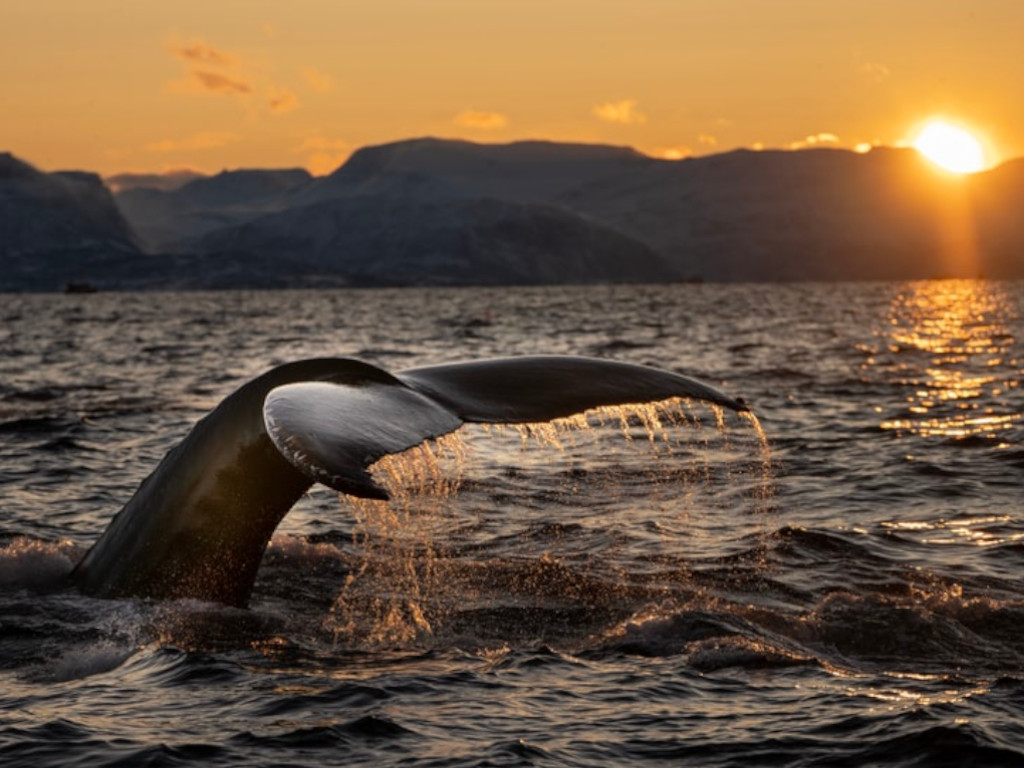
Hauser had tons of footage that served as evidence of the whale’s altruism. And she made sure to use this word instead of compassion or empathy, because there are many who believe that these types of behaviors are specific to humans. In zoology, altruism is described as behavior of an animal that benefits another at its own expense. This certainly seemed to be what the humpback did, but what’s the difference between this and compassion?
Compassion vs. Altruism
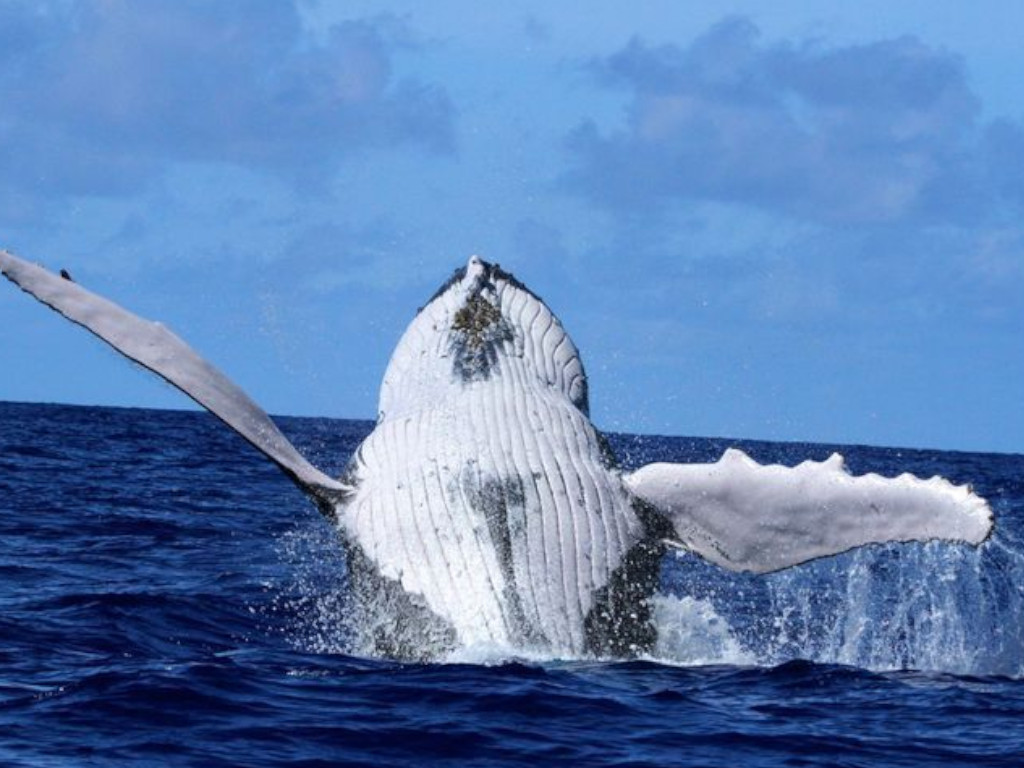
According to marine ecologist Robert Pitman, an act of compassion is described as when humans protect an animal from danger, and although altruism seems similar, the explanation behind the action is different. In the humpback’s case, it may have protected Hauser out of some instinct to protect its offspring, which it temporarily considered the marine biologist to be. Regardless, she is beyond grateful for the help she received that day, and it wasn’t an isolated situation.
Hauser Returned to the Sea
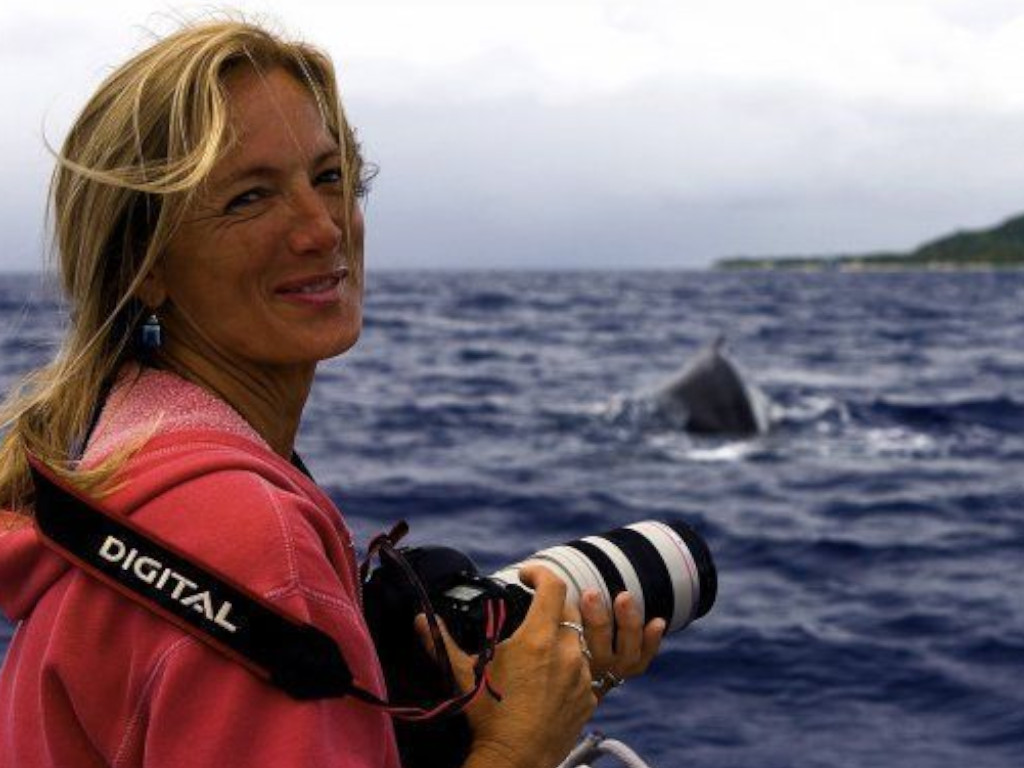
Four days after her initial encounter with the male humpback whale, Hauser went back to diving in the same area. And then, she saw another humpback whale approach her, only this time, it wasn’t a male. It was female. This time, Hauser wasn’t afraid when she saw the beast swimming towards her. Instead, she floated in the water and waited to observe the animal’s behavior. But was it trying to warn her of another shark attack?
The Whale Hugged Her
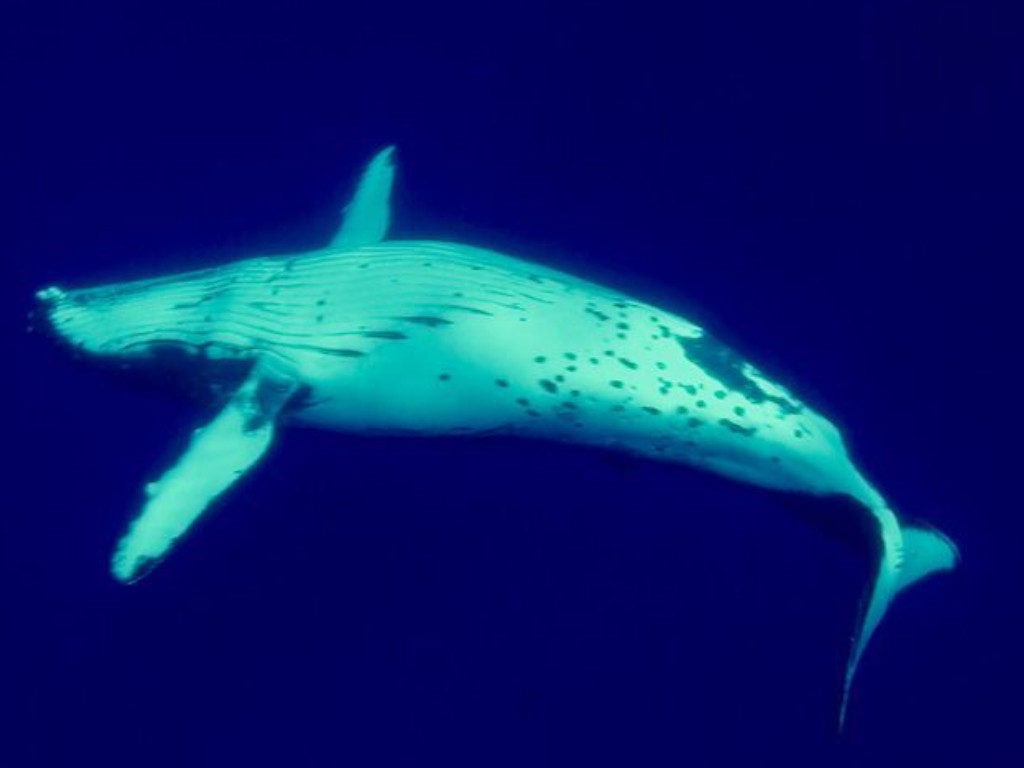
The female humpback whale glided about 4 feet under Hauser. Then she spread her pectoral fins and encompassed her like she was hugging the human. This might have been a random gesture, but ironically, it was Hauser’s birthday, and the whale appeared to be congratulating her on her special day. And it filled her with a sense of joy to have these creatures that she has spent 30 years studying treat her as if she were an extended member of their pod.
Rarotonga Became Her Home Base
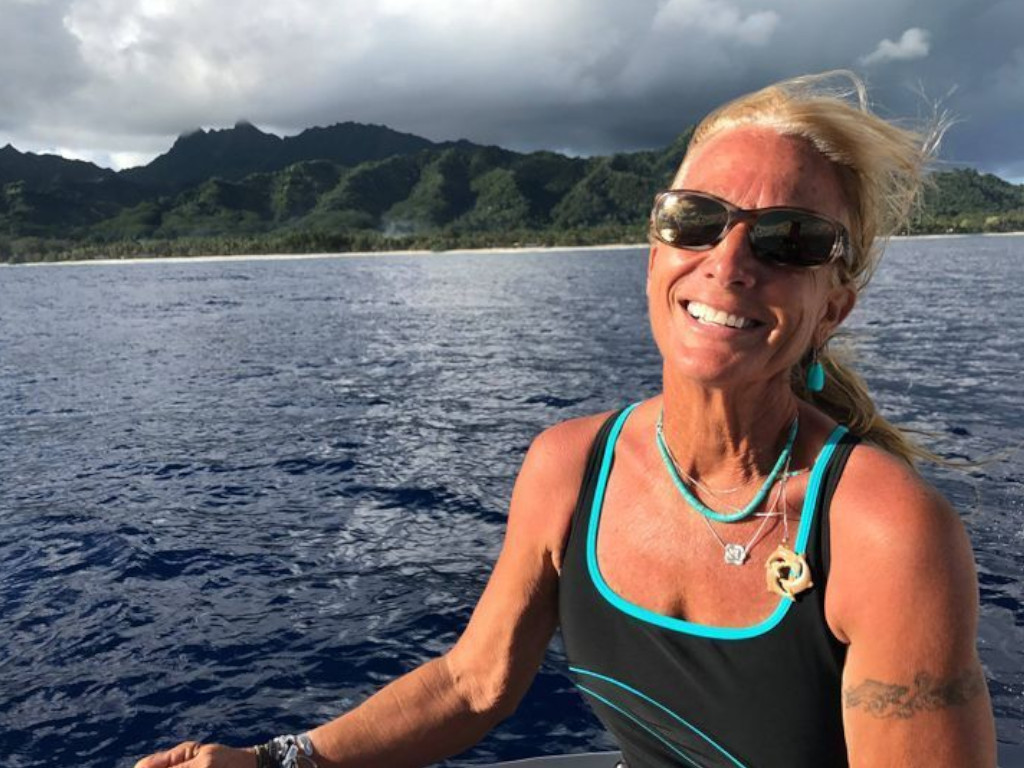
Over the years, Hauser was able to turn 772,000 square miles of the island nation’s waters into a whale sanctuary. This is where she set up the Center for Cetacean Research and Conservation. And all of her hard work and petitions paid off in 2001 when the Cook Islands’ government declared that the whale sanctuary would extend 200 nautical miles in every direction from the islands’ shore line. So naturally, by 2017, Rarotonga in the Cook Islands had become her home base. Perhaps that whale hugged her and that other whale saved her from the shark as a way of saying thanks for turning that area of the ocean into a save haven for whalekind.
Her Old Friend Paid Her a Visit
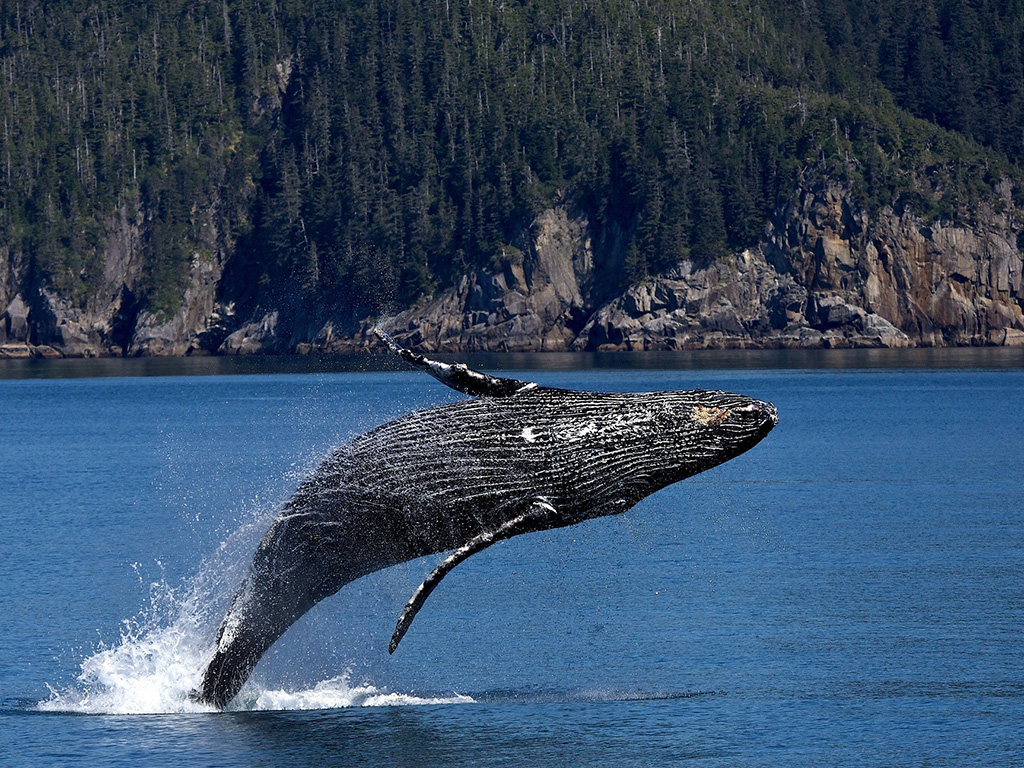
The male humpback whale that had saved her from the tiger shark had returned a year and 15 days later. ““He’s back! I seriously never thought I would see him again…Maybe only in my wildest dreams. We had been out on the water conducting research for a couple of hours when we got a radio call from a fisherman reporting a whale off the harbor. We found the humpback by himself and when we approached him from behind we noticed his unusual dorsal fin, which was very prominent,” she was quoted on whaleresearch.org.
Was It the Same Humpback Whale?
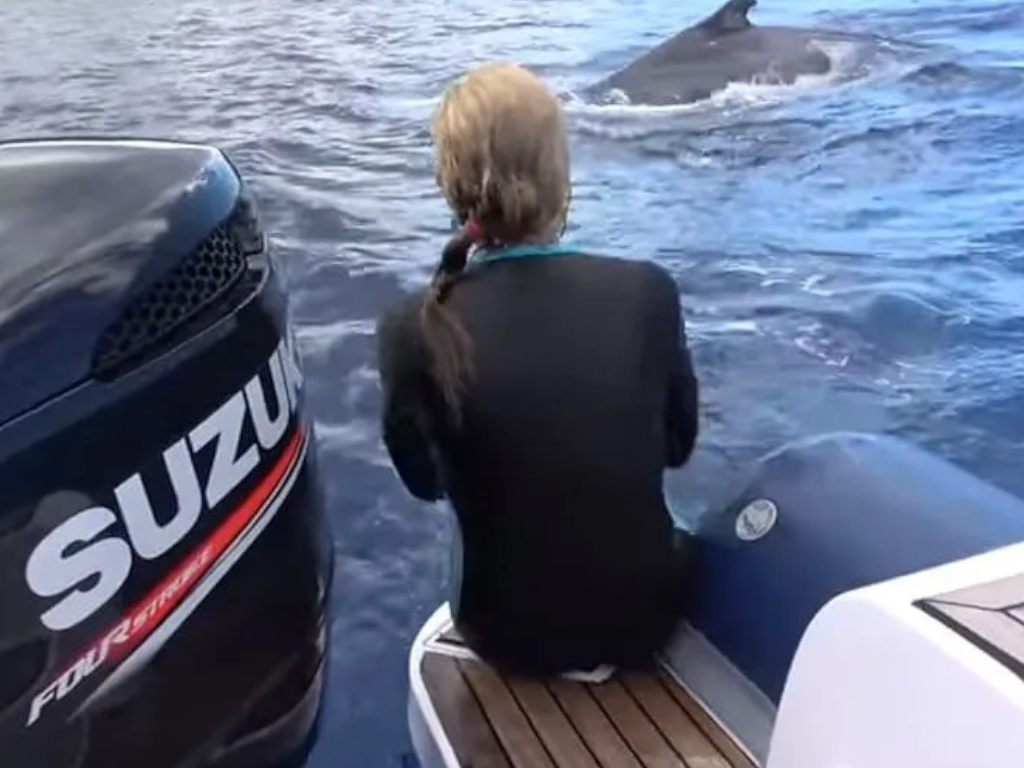
Hauser continued: “The humpback dove and we waited for him to finish his nap and come up for a breath. This time he was quite far away and closer to the reef. He dove after taking 4 breaths and I took a picture of the ventral side of his tail fluke for identification purposes. I noticed that he had two deep gauges, one on each side of the top edge of his fluke. I went back to the photograph on my camera to have a closer look by zooming in on the shot. Could this possibly be my friend that protected me from the tiger shark a year and 15 days ago? Could he be back here in Rarotonga?”
She Double Checked the Photos
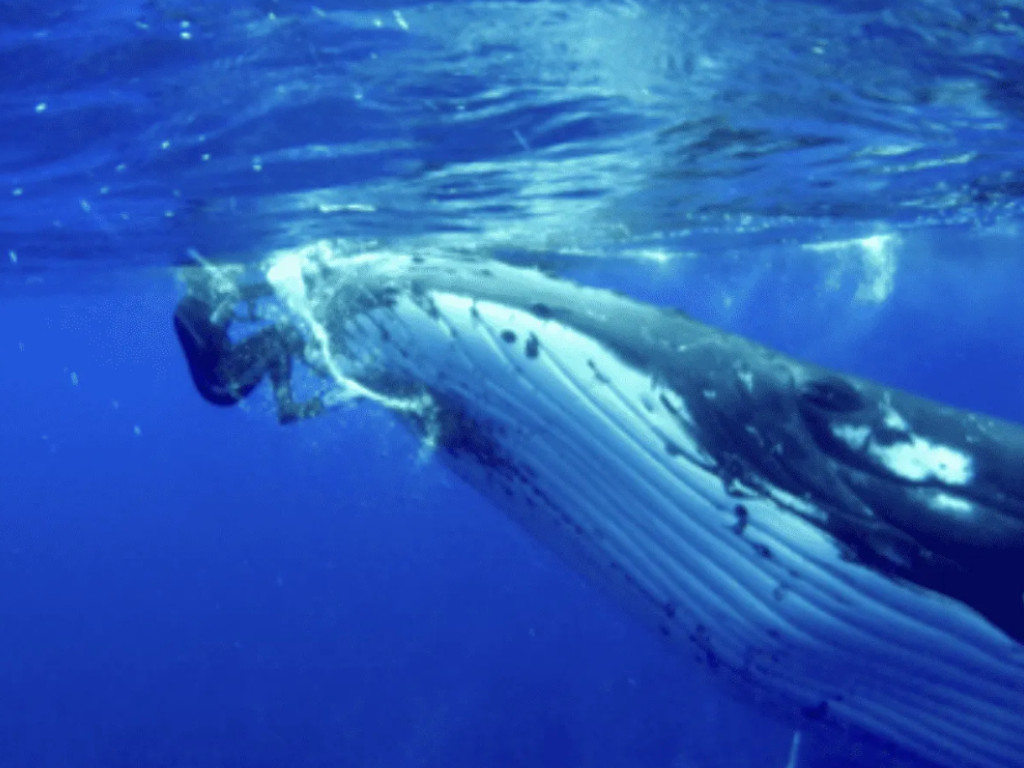
“I grabbed my phone and went back to the underwater photographs that I had taken of him last year. He was here on September 14th, 2018 and I had only seen him that one time. It was the famous day when he had pushed me out of harm’s way from a huge tiger shark,” she wrote. Hauser could still remember that day like it was yesterday, but she wasn’t sure if this was the same whale.
The Scientist in Her Had Doubts
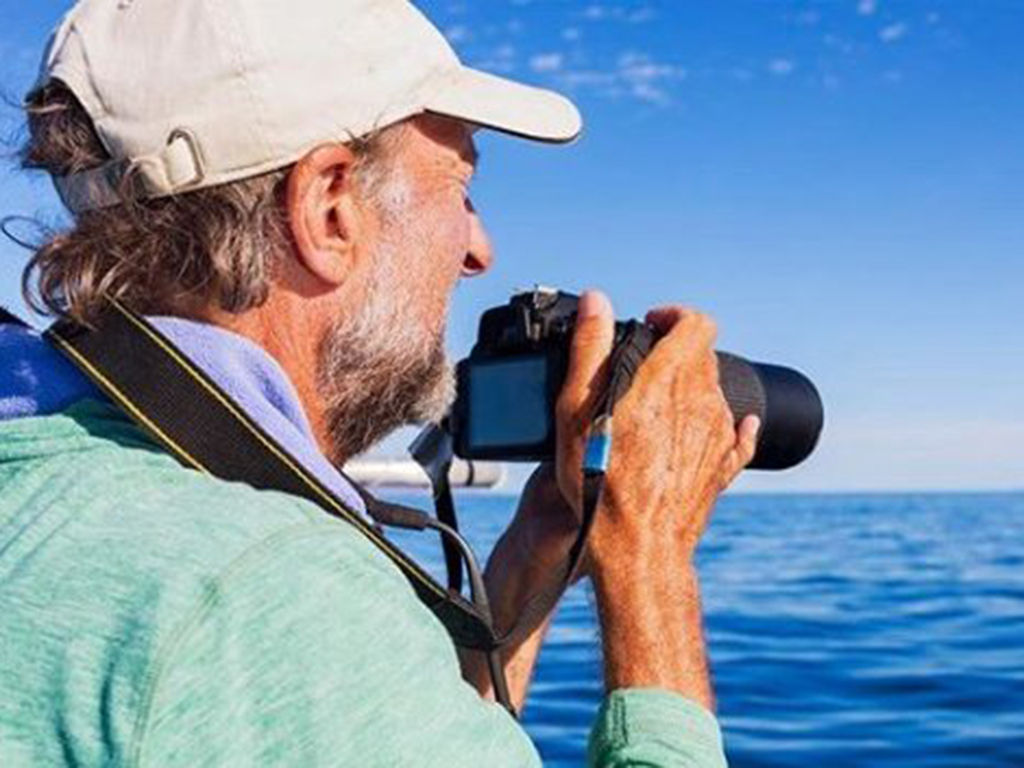
“When I looked at the past and present photographs of his tail fluke, side by side, I thought that there was a good possibility that it might be him. I still wasn’t completely sure. The ‘scientist’ part of me had doubts,” she said. Then the whale did something to her that made her realize that this was in fact the same creature she had encountered before. And it made her very happy to see him again.
She Screamed With Joy
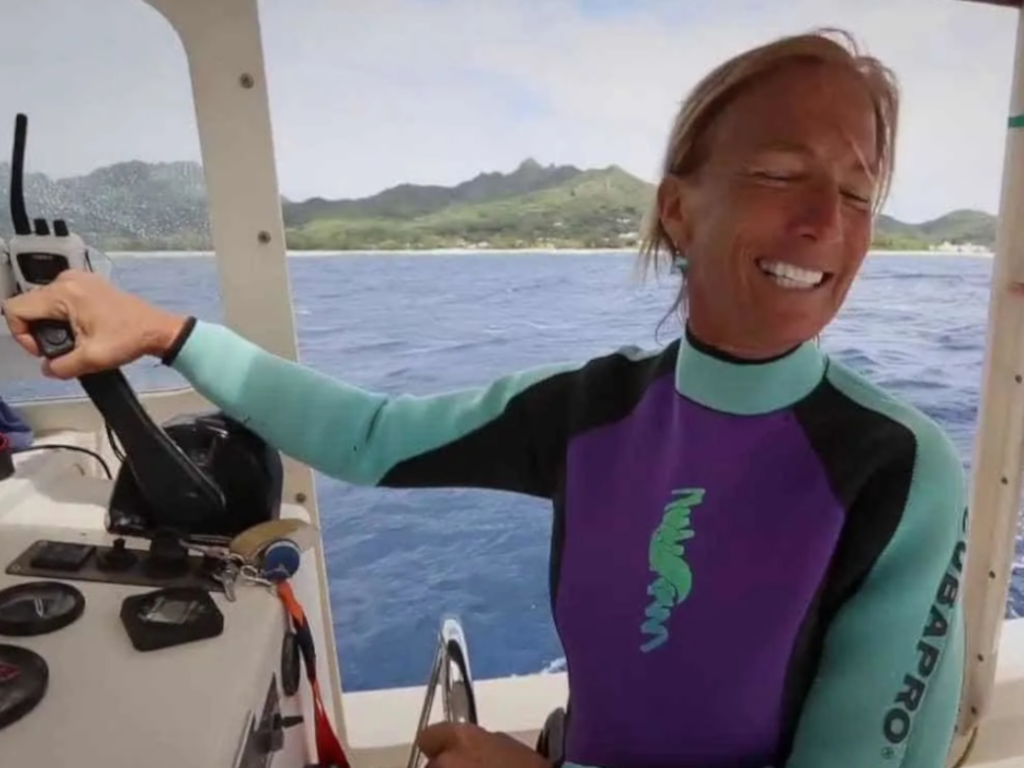
“He swam to the side of the boat a few feet away from where I was standing when he looked hard and long and carefully, directly at me. There was absolutely no doubt in my mind that he recognized me. He got closer and then I saw the white spot on his side of his head and I knew for sure that it was him! I screamed, and shouted with glee, ‘Hello my friend, you’re back! I can’t believe it!’”
The Whale’s Return Was Unusual
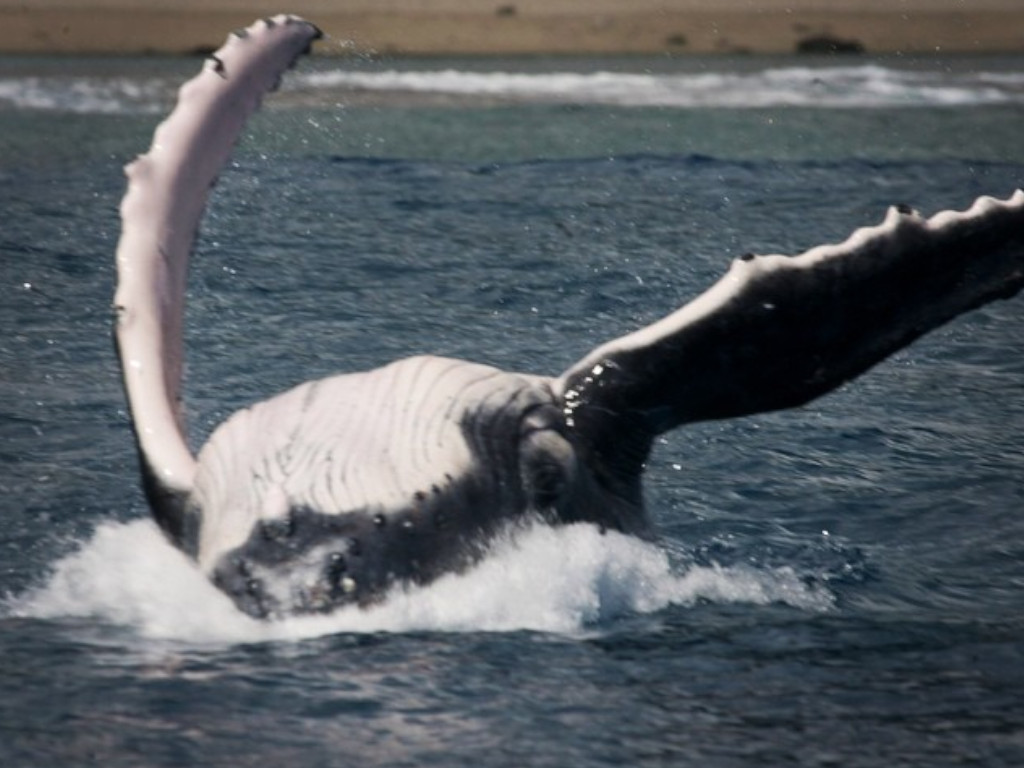
She continued: “This was especially unusual because in 21 years of whale research here in the Cook Islands, I have only had 2 humpbacks return to Rarotonga. This was the 3rd! It was also unusual because every whale that I have Satellite Tagged in the past 2 decades in the Cook Islands had gone from East to West. I had a call that he was in Tonga 2 months ago … that means that he came from West to East. This was unbelievable! (I do love it when you have a theory and then it is disproven by a wayward whale!)”
The Whale Woke Up
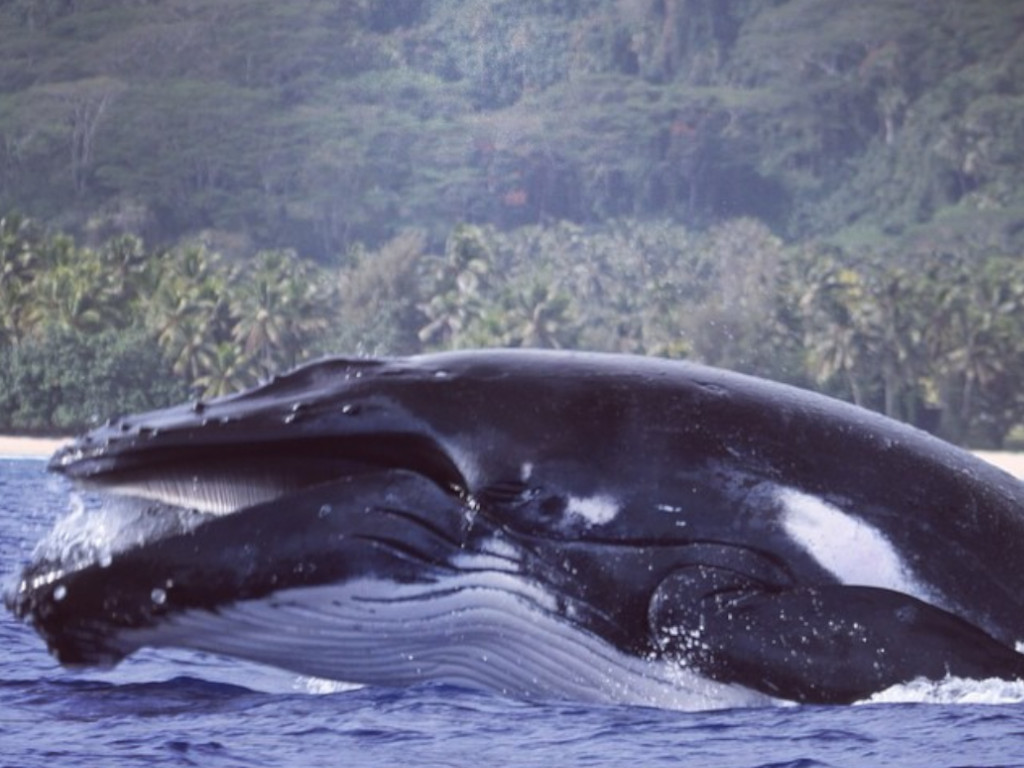
“I was so excited to see him, that when he dove and was resting on the bottom just off the reef, I slid over the side of the boat practically swallowing the ocean with an enraptured grin. My research permit allows me to do this, otherwise it is against the rules and regulations to enter the water with a whale in the Cook Islands. He was sleeping and his head was facing down towards the sea floor along the reef. The whale was in a contorted position and I took lots of pictures of him, even though the visibility wasn’t great. And THEN he woke up! My heart started pounding!”
The Whale Was Happy To See Her
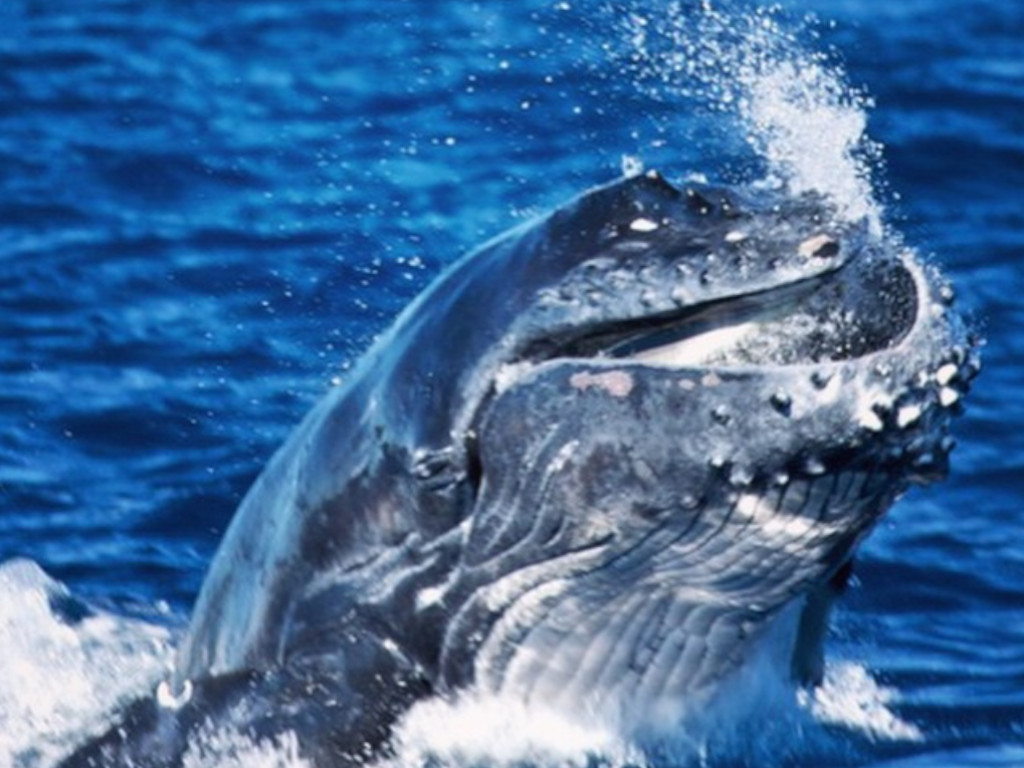
“I handed the camera to my research assistant Amy who was in the water with me. He swam up to me and had a good hard look. If whales could smile, he DID! He nudged me with his gigantic beautiful head. He kept nudging me gently and I held onto the tubercles on his face and gave him a very warm hello. The whale then put me on the top of his head and carefully lifted me up out of the water! I felt safe and I kept wondering how I was once again graced by the presence of this incredible whale! My heart was full of such unconditional love and excitement. Instead of a warm hug from a friend, he was giving me a bit of an excited, rough slap on the back,” she stated.
The Encounter Was Kind and Graceful
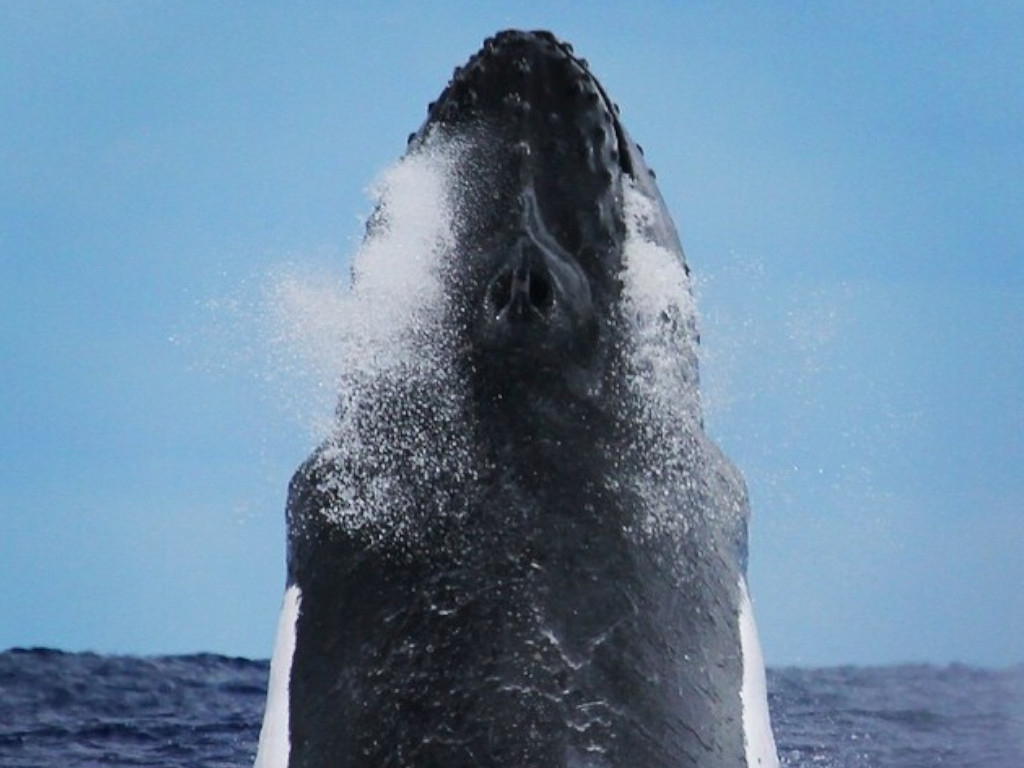
One of the first things Hauser said to the whale was: “‘Hello my friend!’ Indeed, we were old friends! He was as gentle as a 50,000 pound whale can be with a 132 pound human. There was no sense of fear in his eye this time and the encounter was kind and graceful. My research team on the boat was amazed at our encounter of reuniting and took photos and video! I hugged the whale’s pectoral fin and he lifted me out of the water while everyone else was watching with their jaws dropped! The world thought that it was amazing that I had the opportunity to be a ‘whale rider’ last year, but for me it was the most terrifying thing that I have ever experienced. Now it was happening again but only as a reuniting of spirits.”
I Love You and Thank You
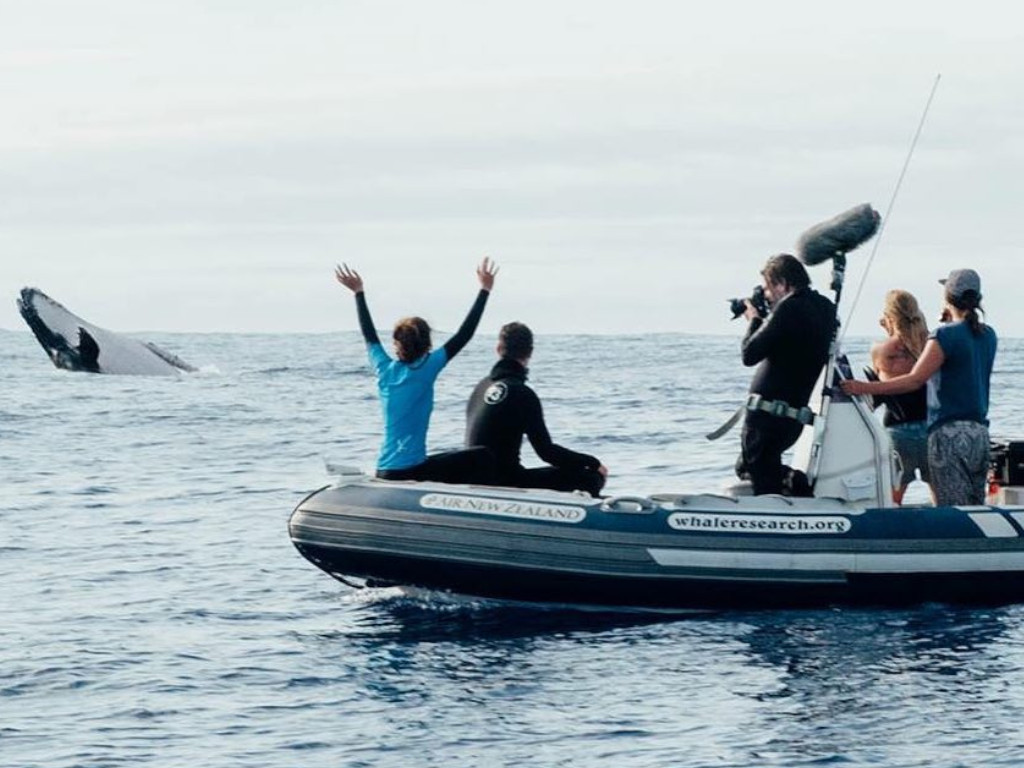
“I have spent 28 years underwater with whales, and this situation was so unusual that I felt like I was in a dream! The boat came towards me and I managed to swim back with my humongous whale friend escorting me! My blubbery friend just laid under the surface of the water at the back of the boat with his head at my feet. He pressed up against the transom. I told him the same thing that I told him last year, as I sat with my feet dangling in the water. I said, ‘I love you and thank you!’”